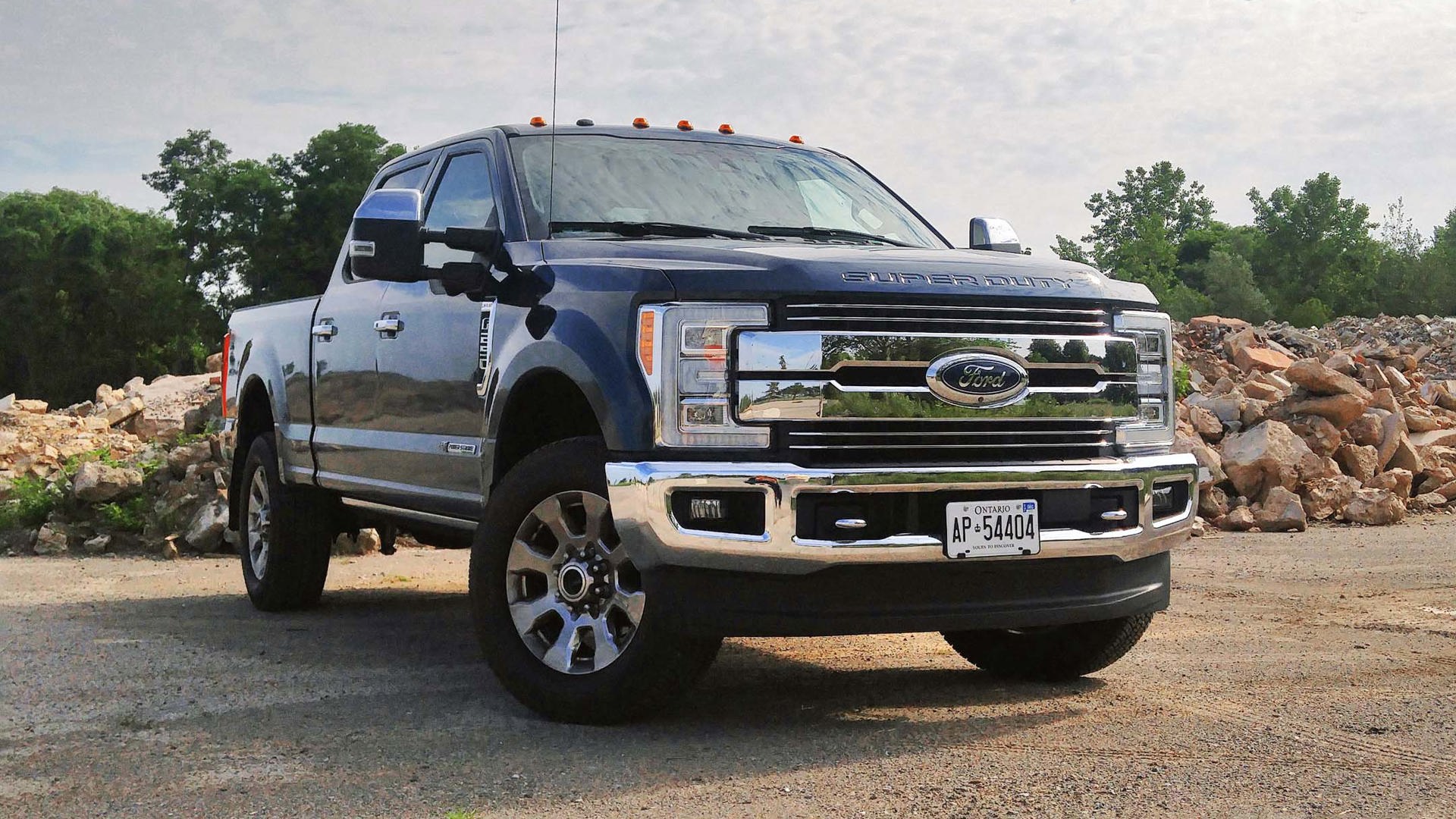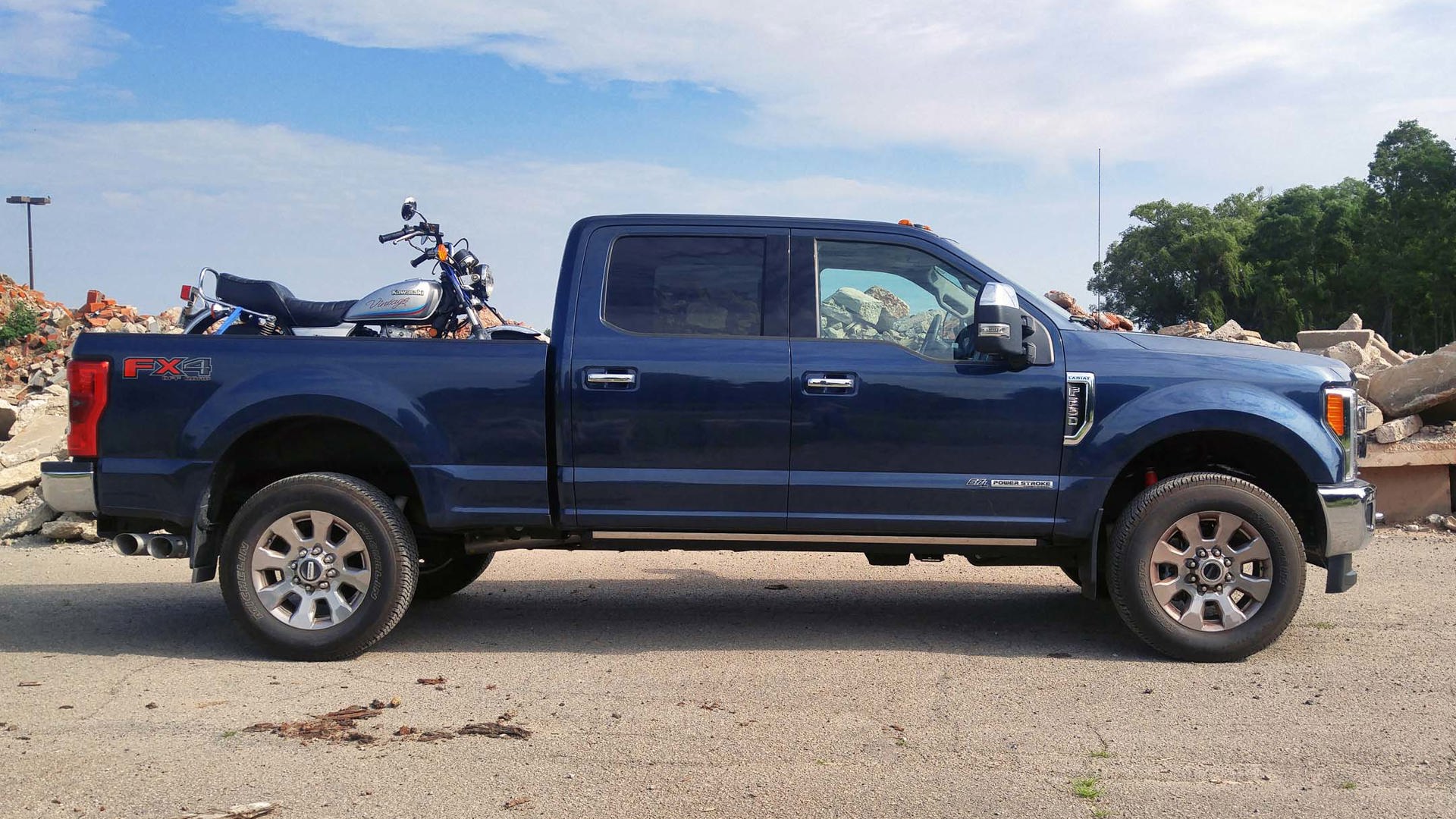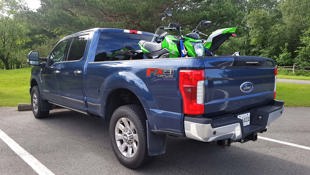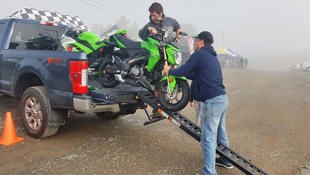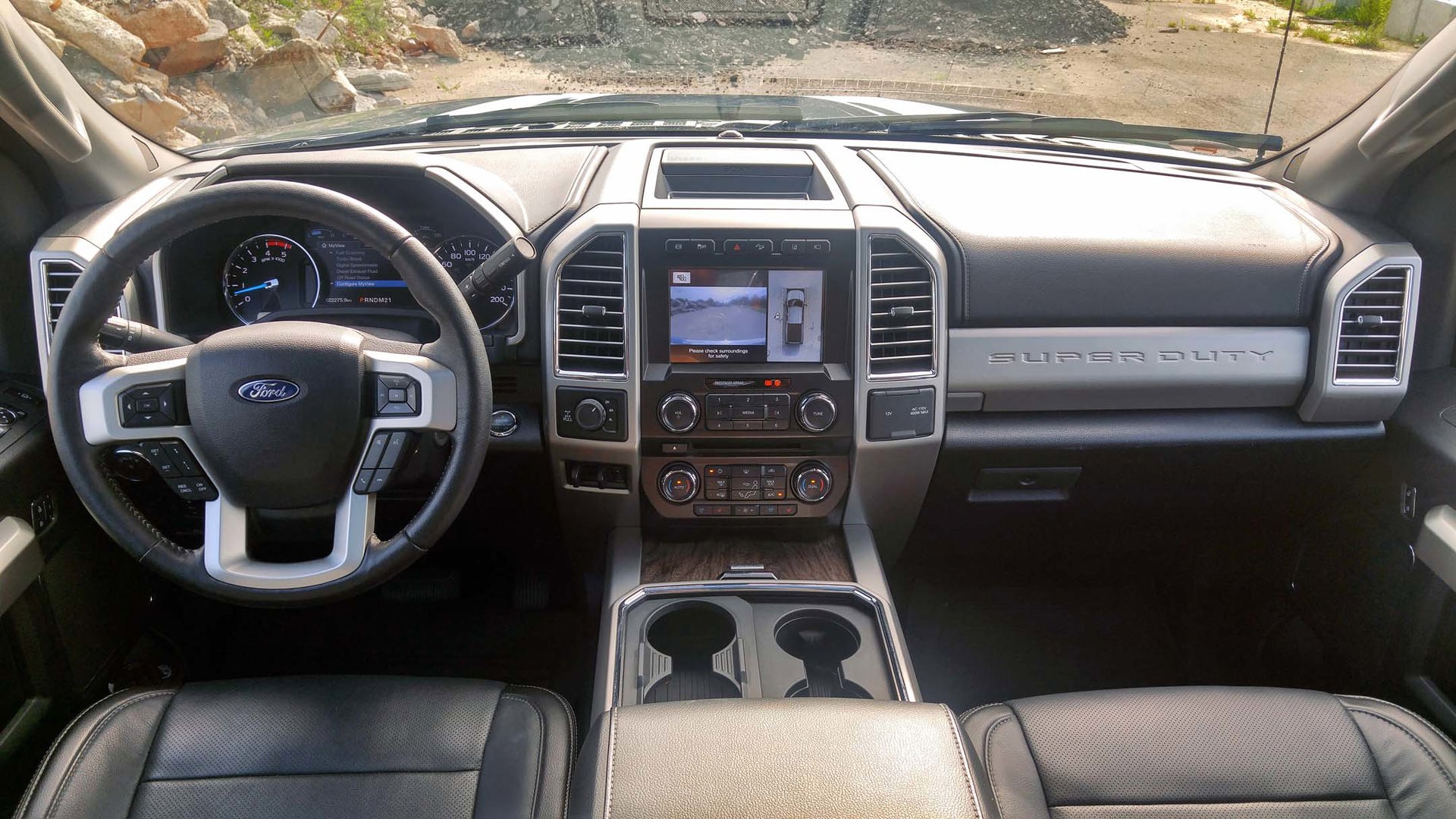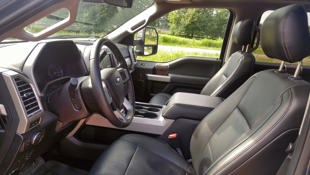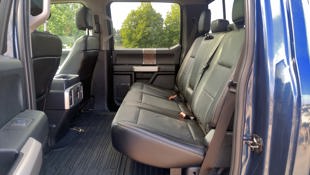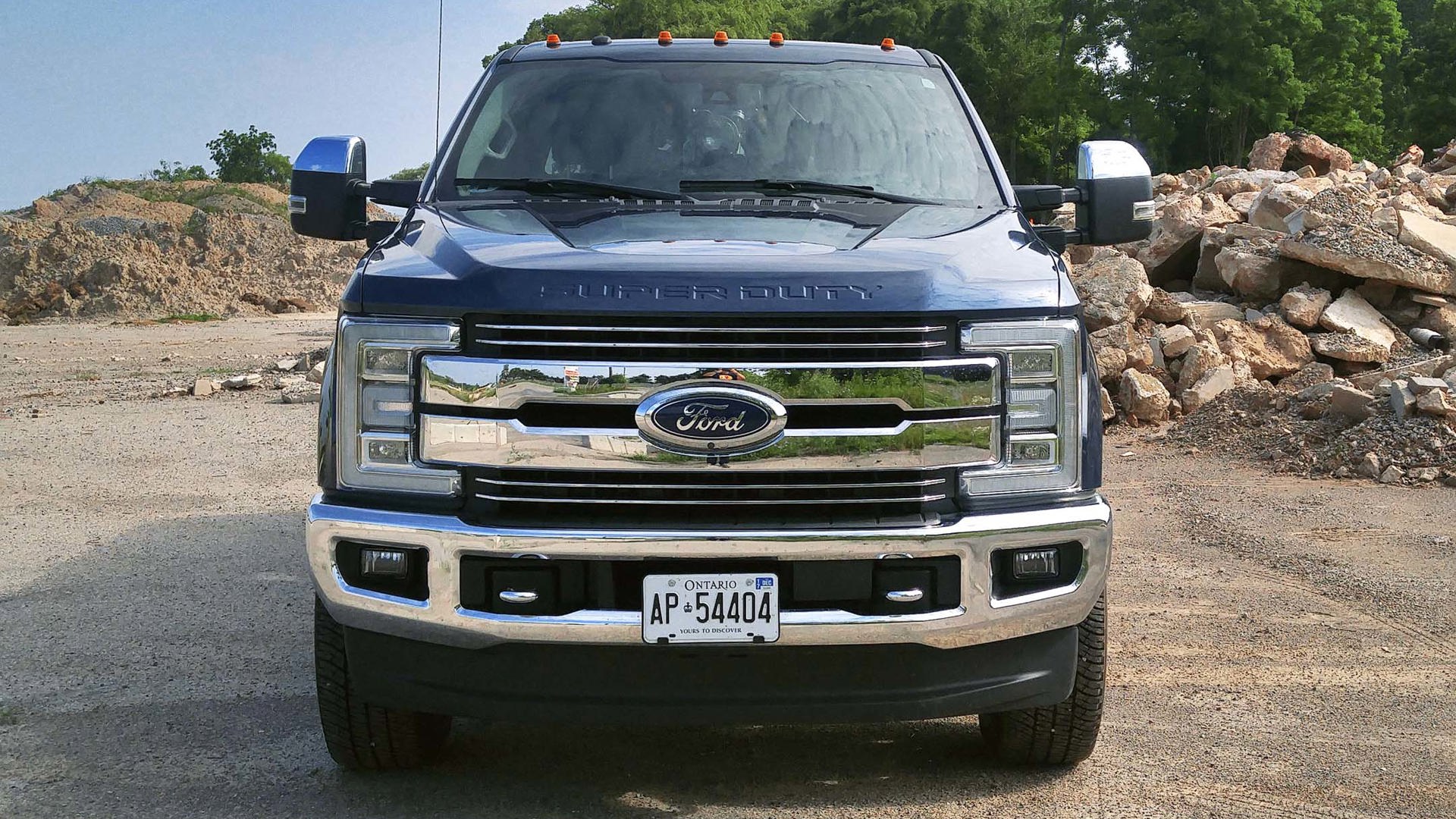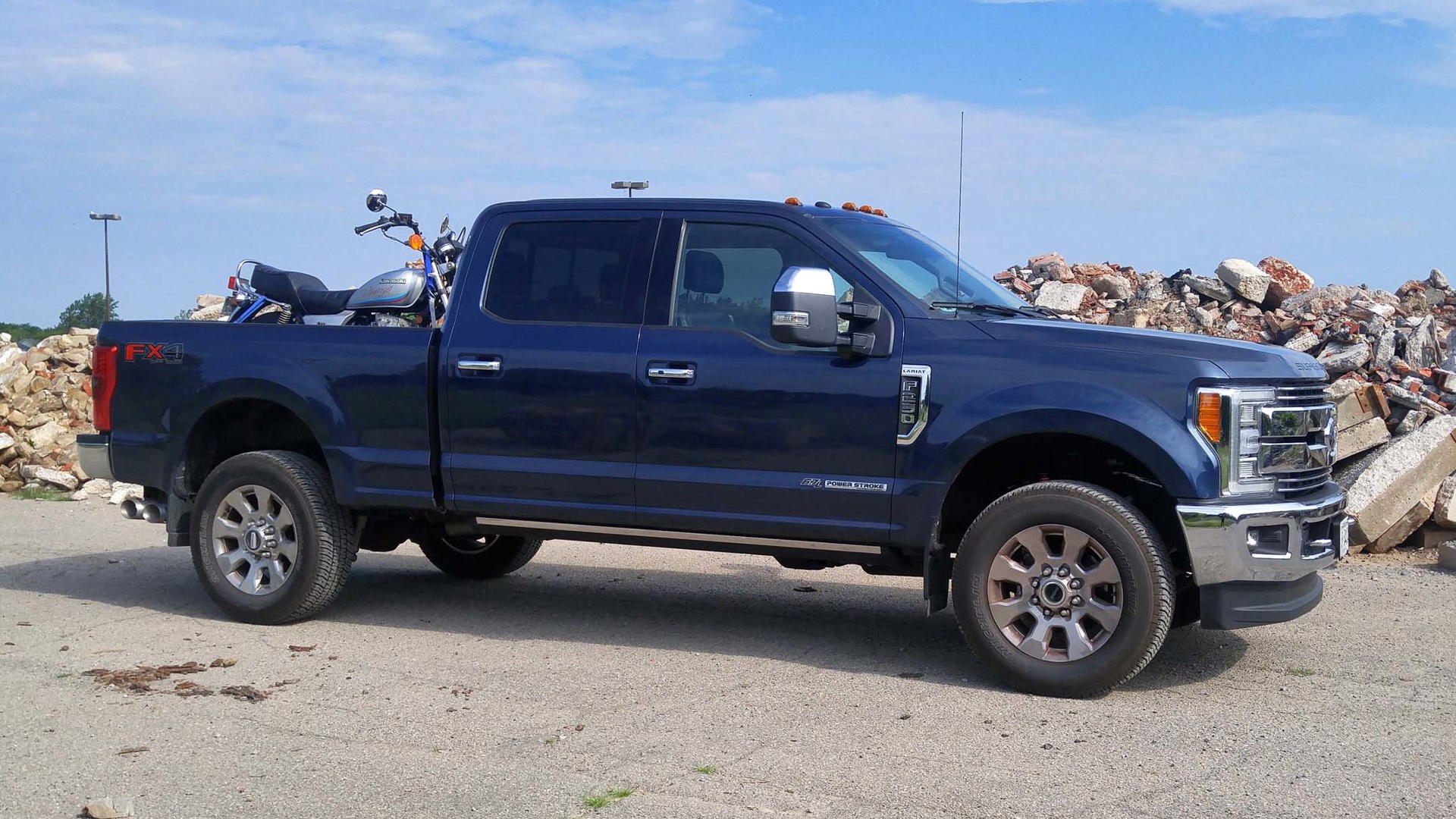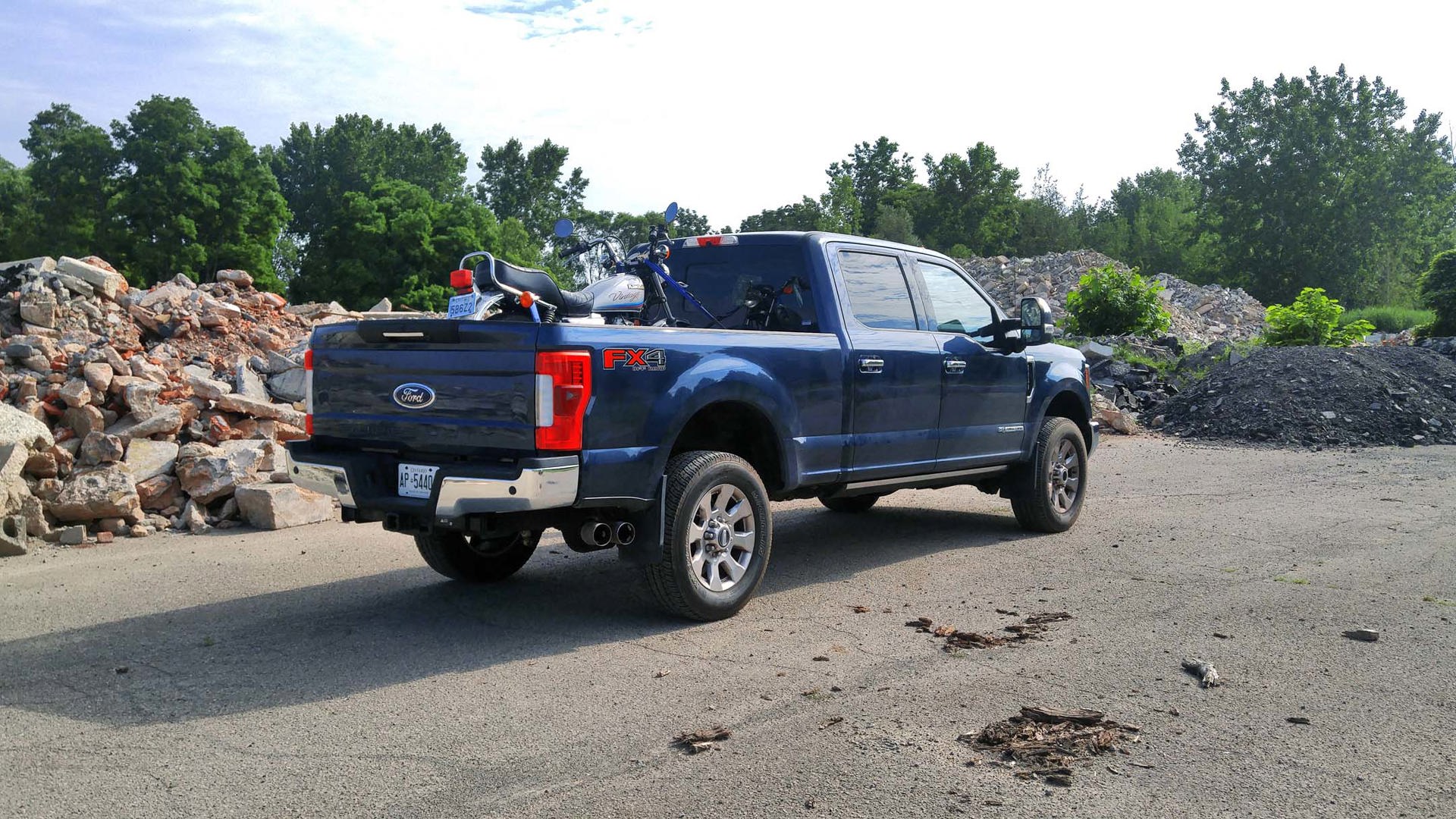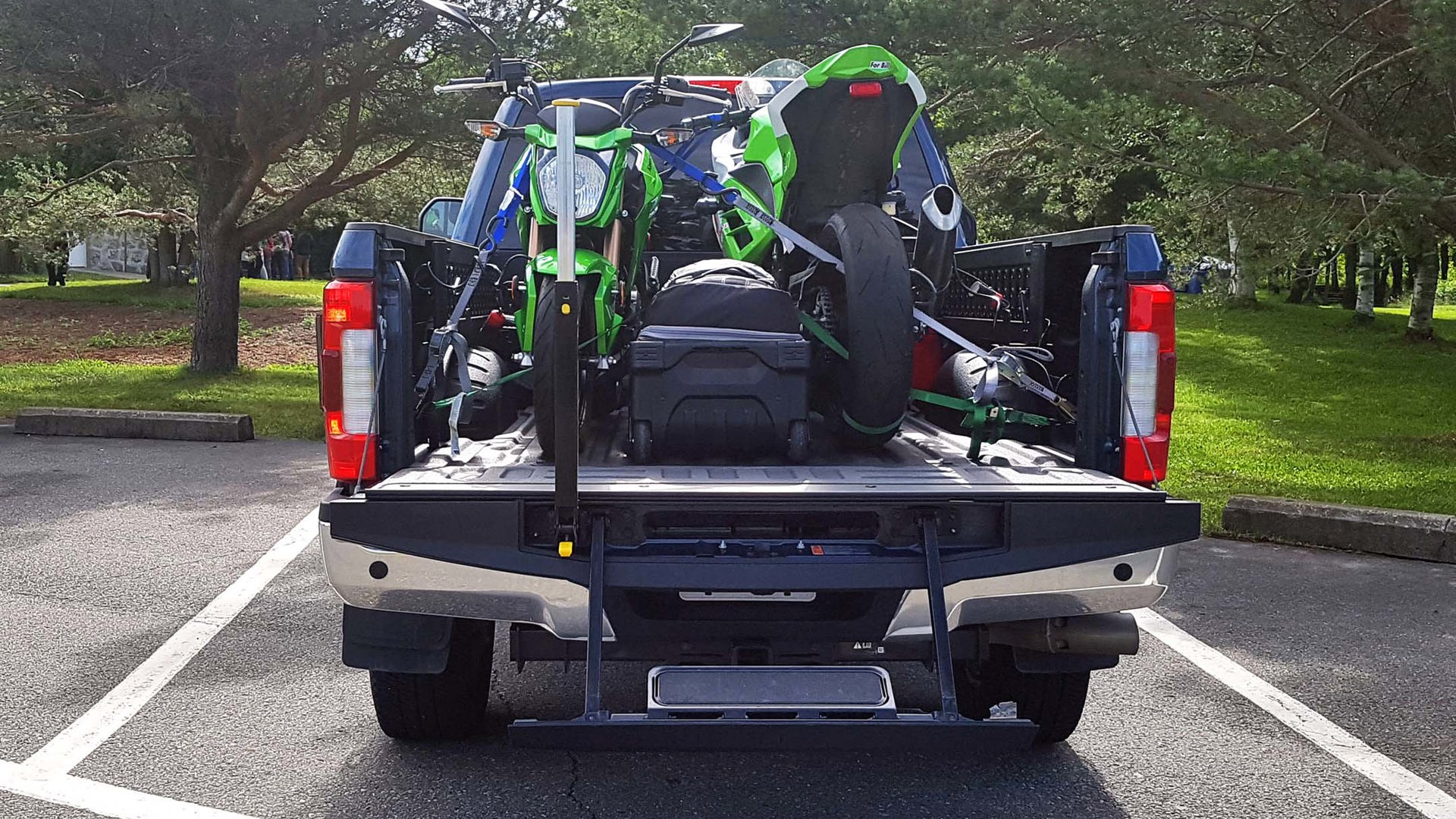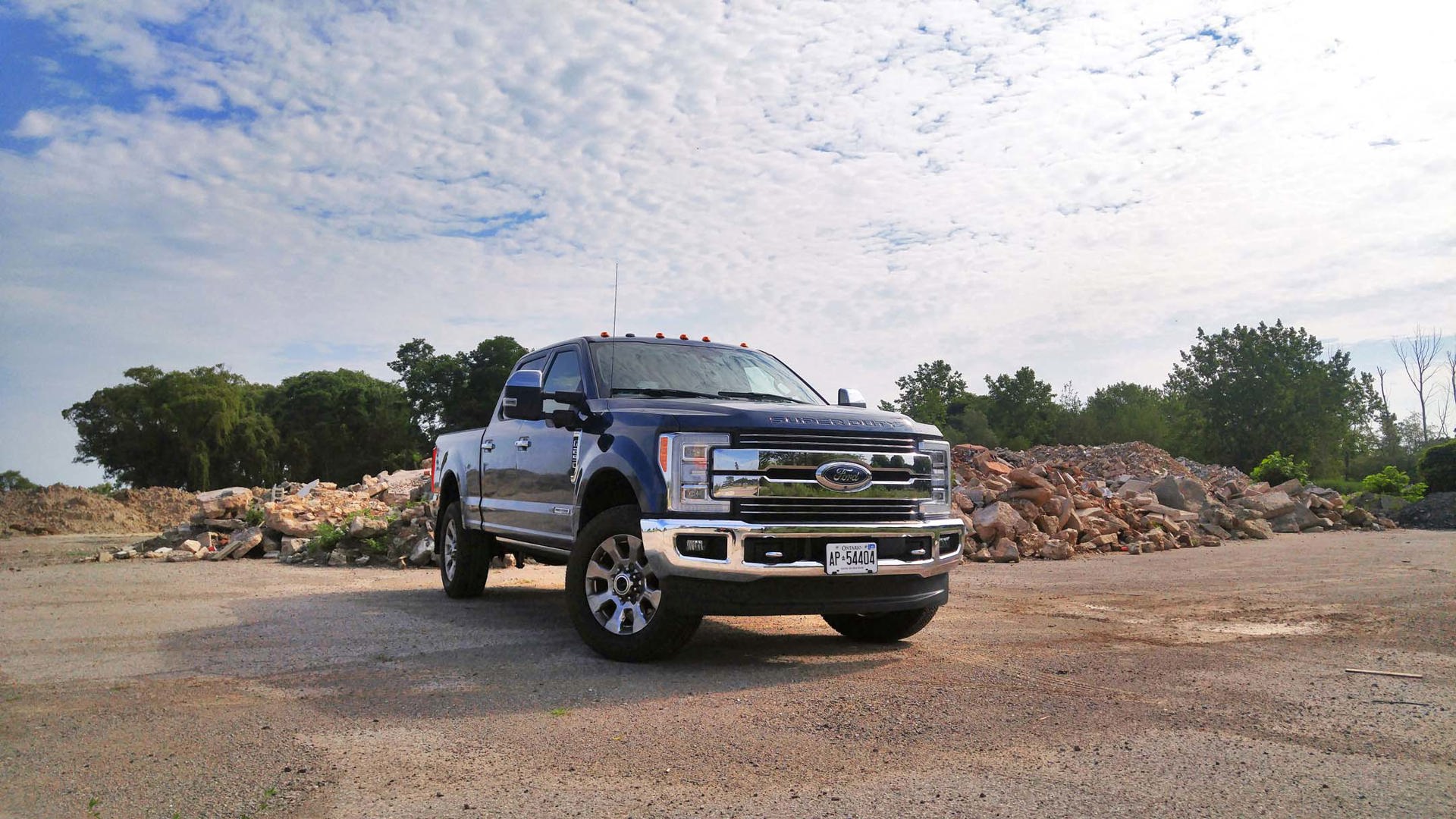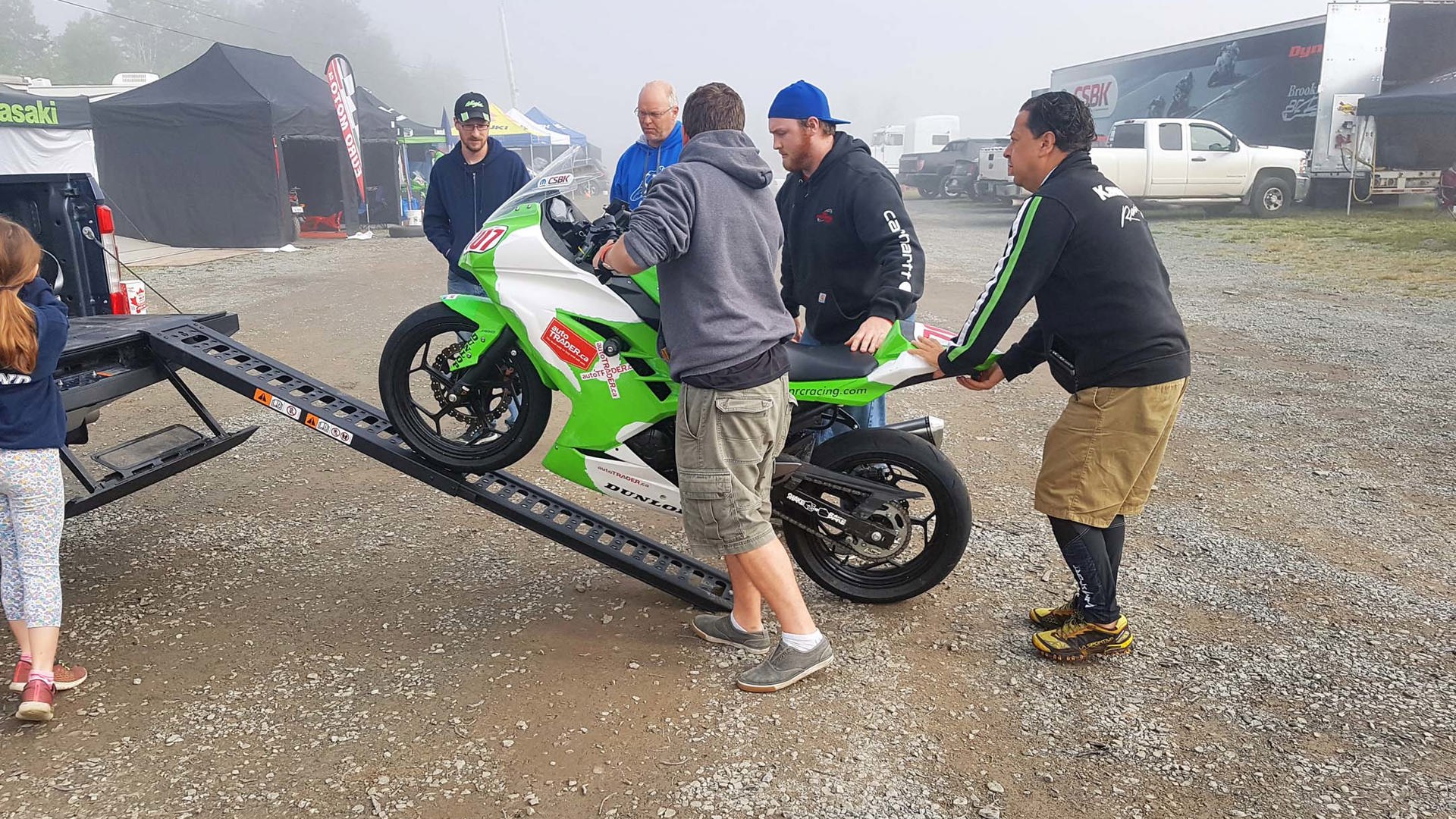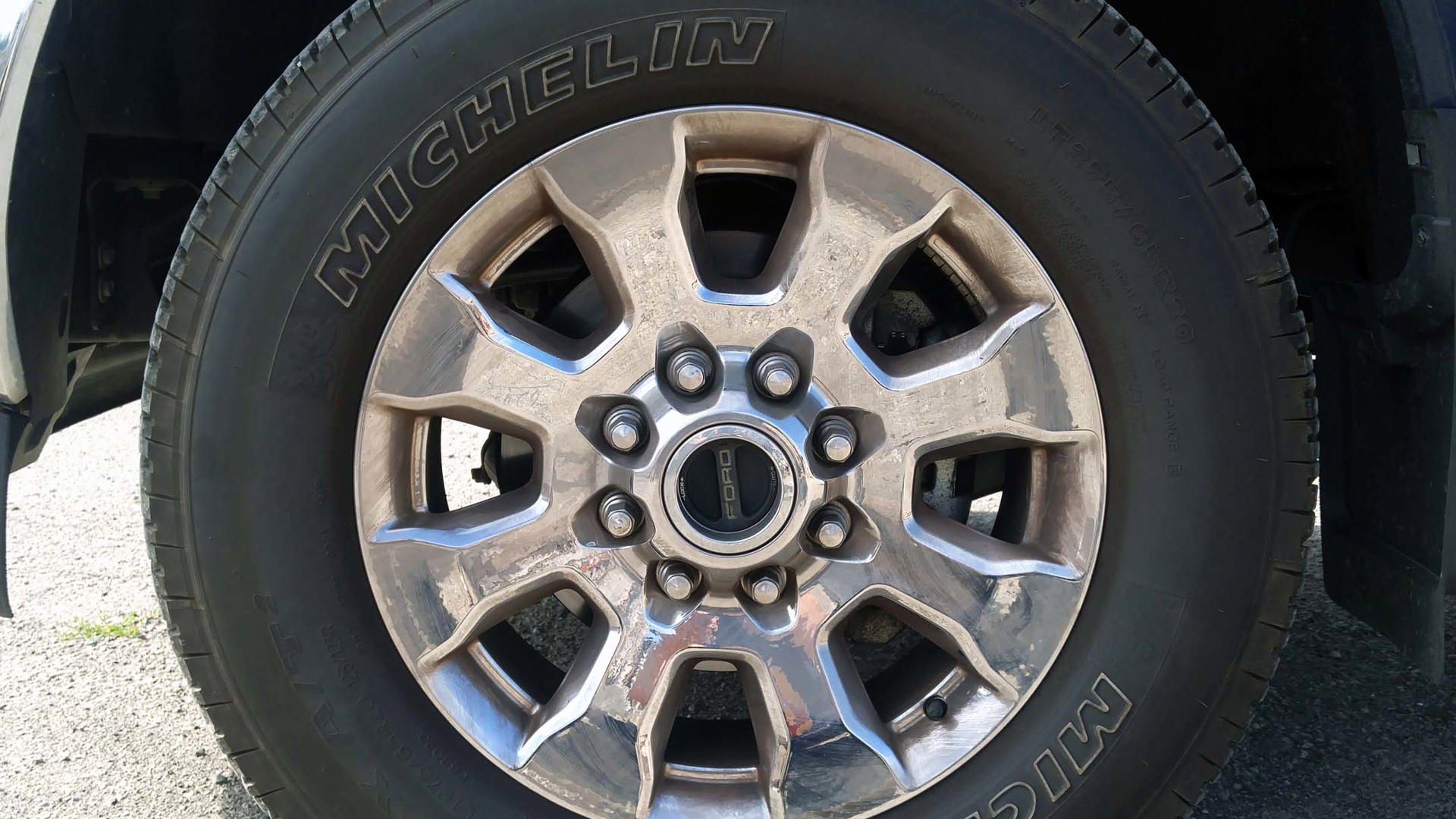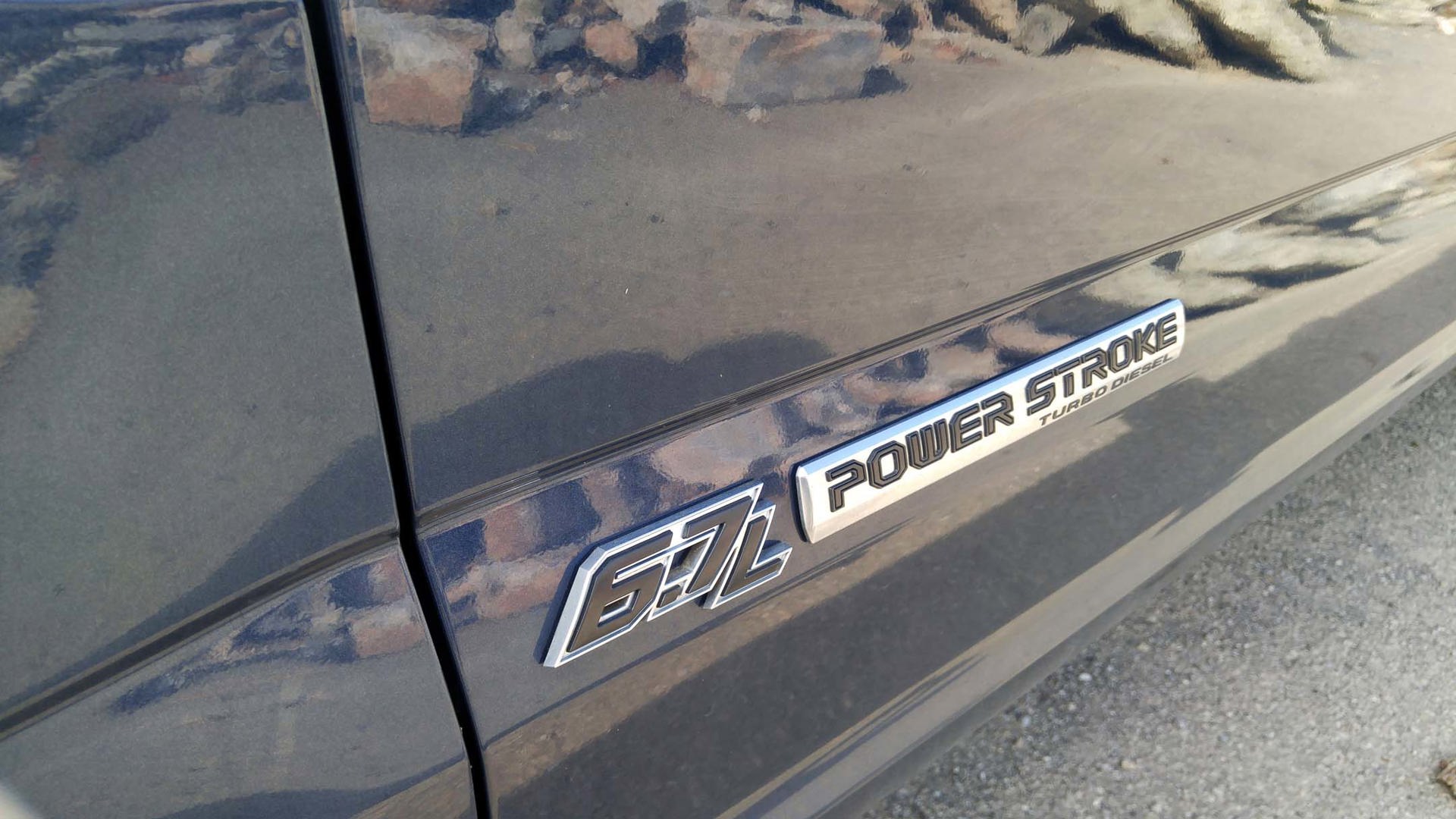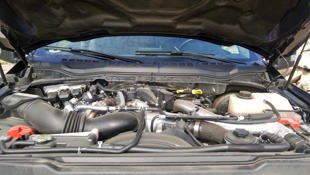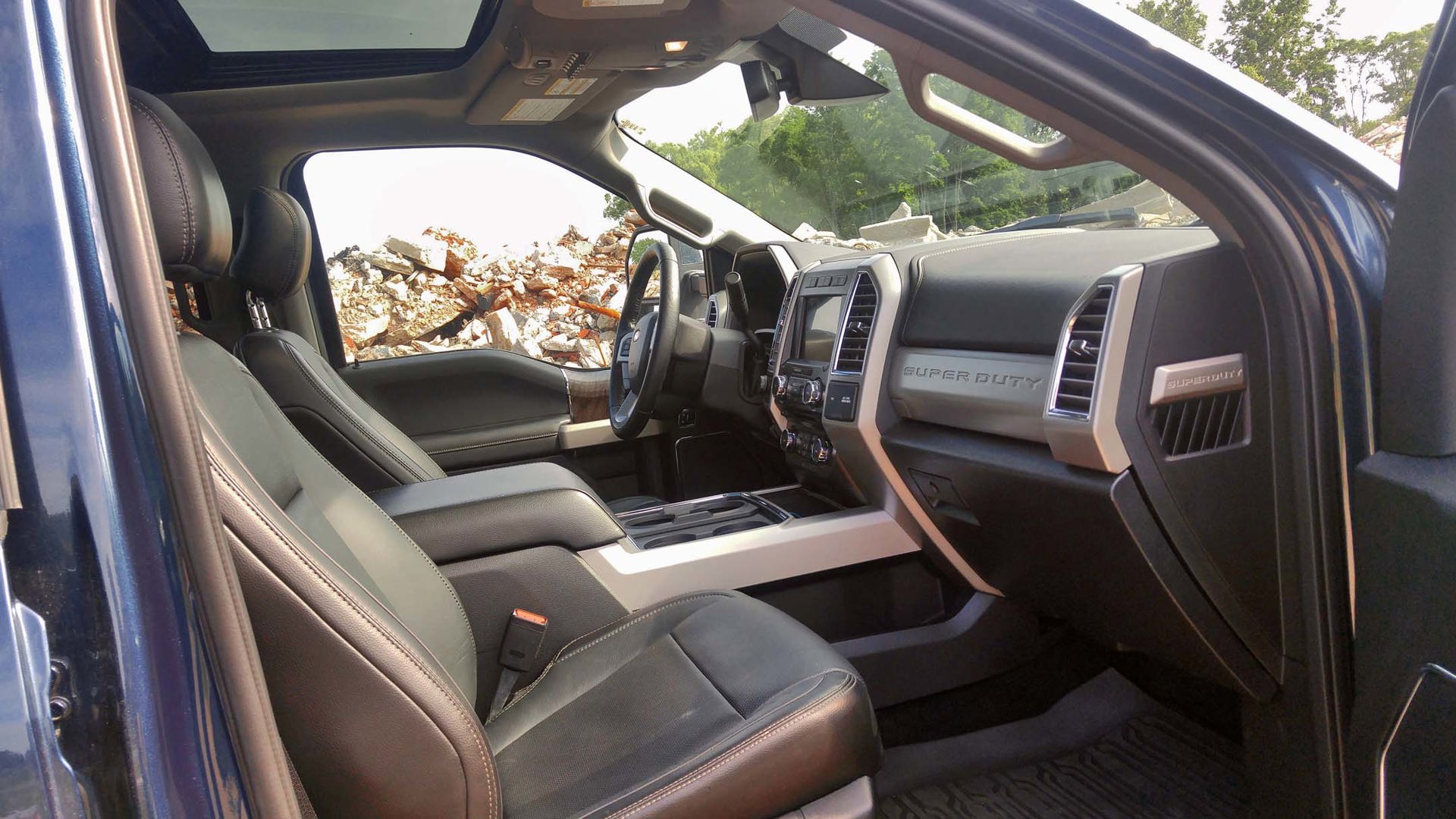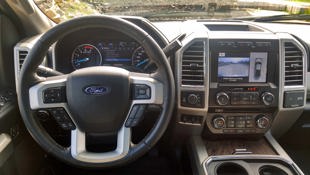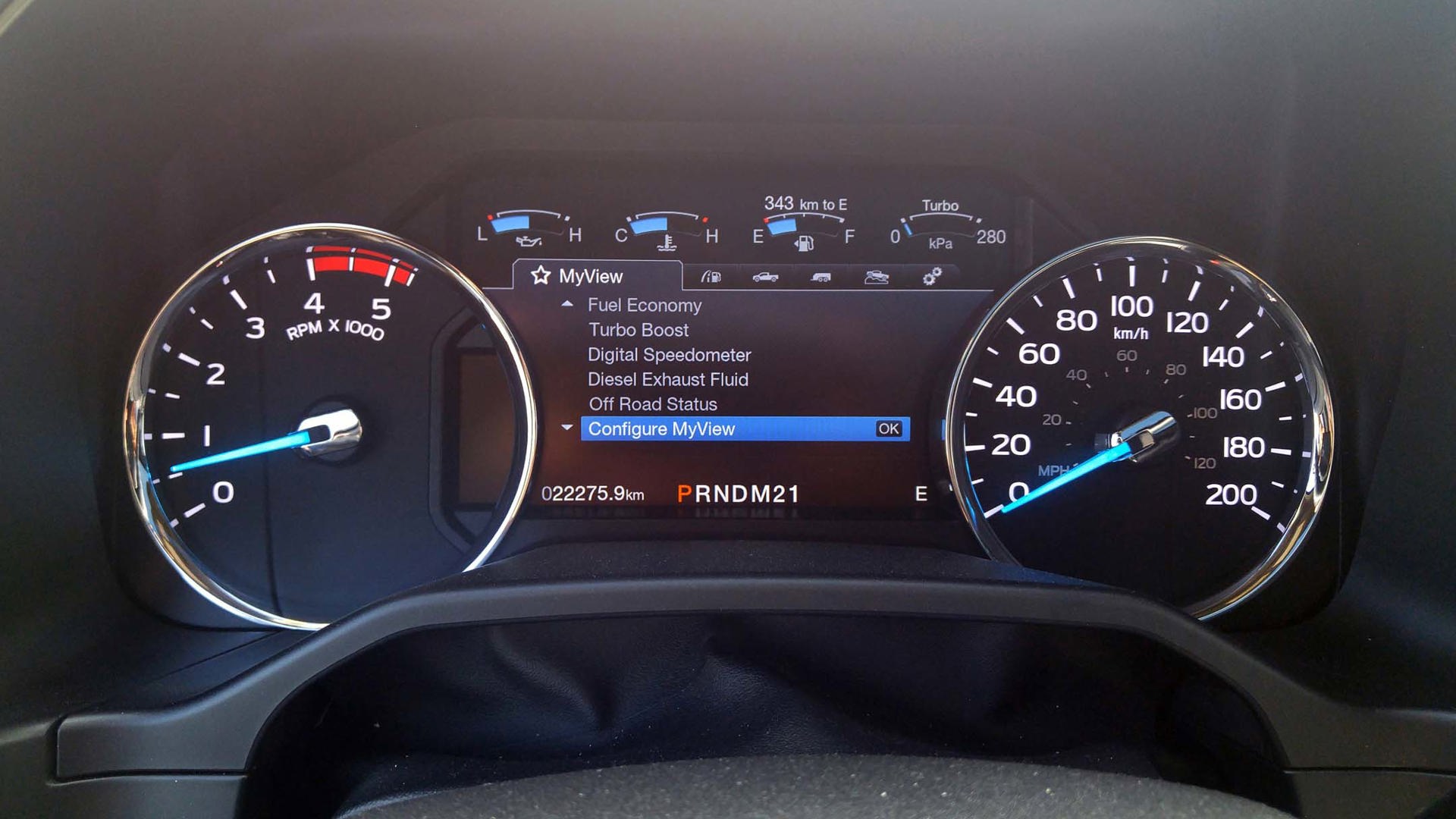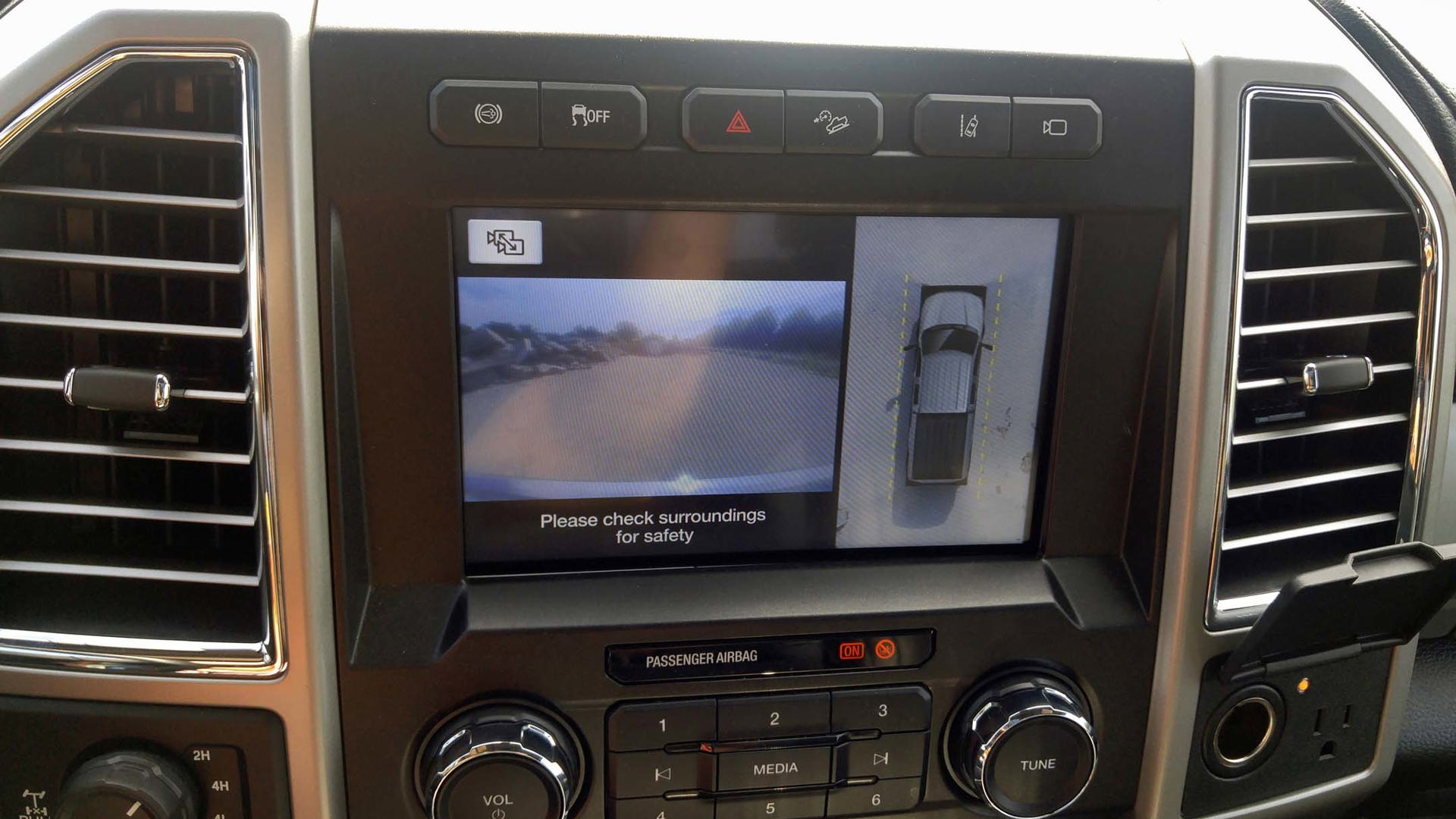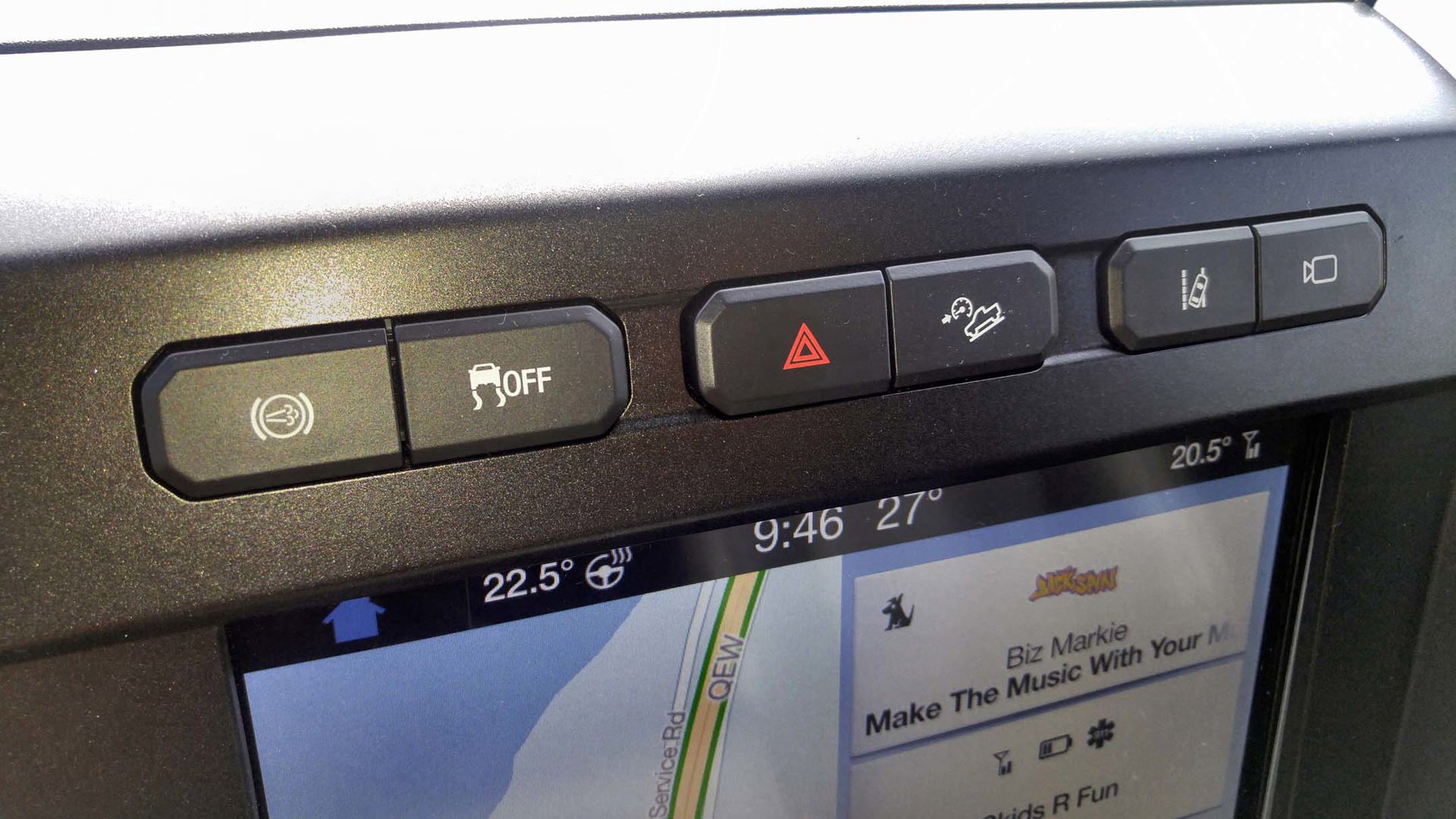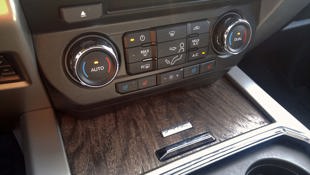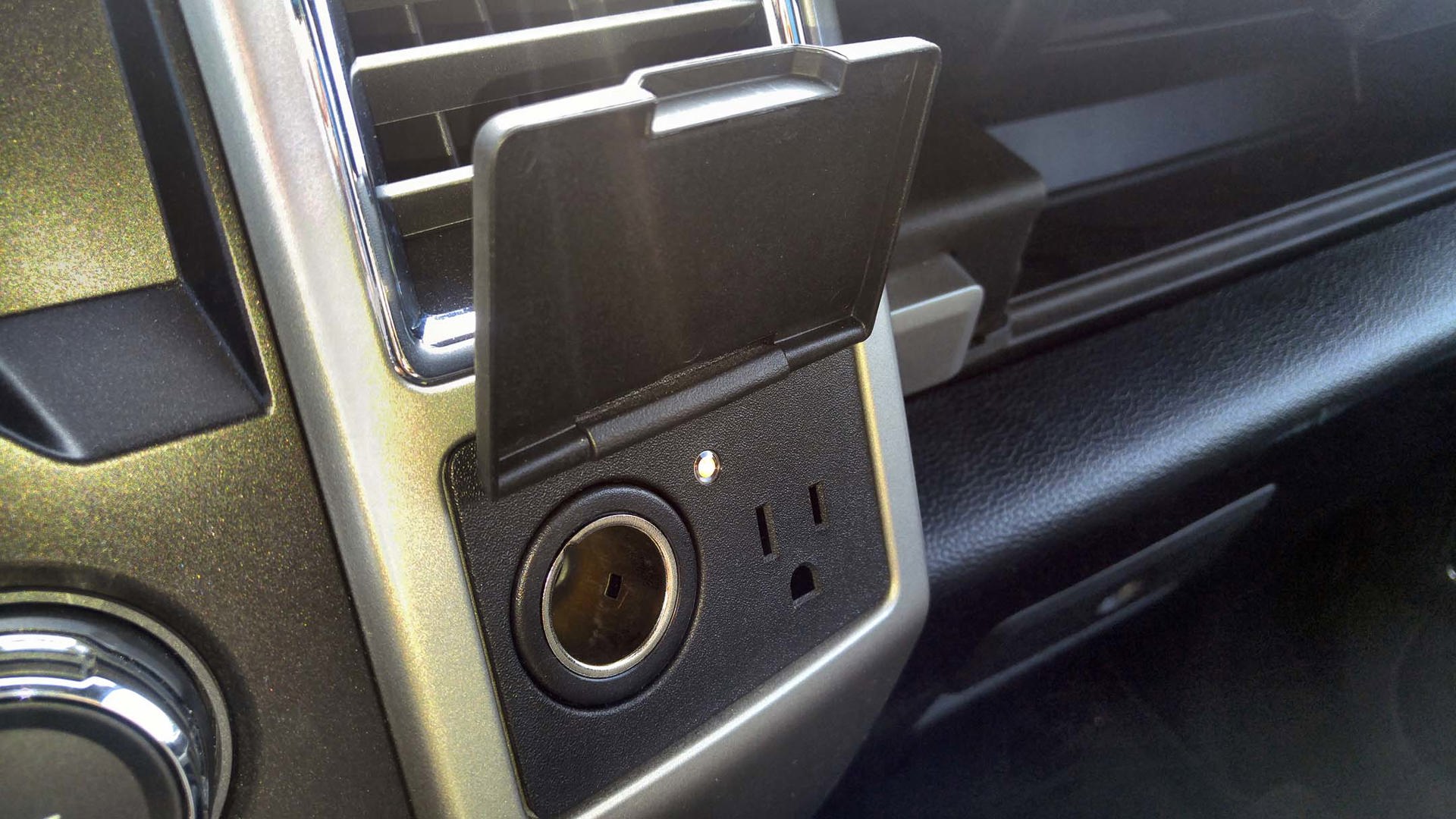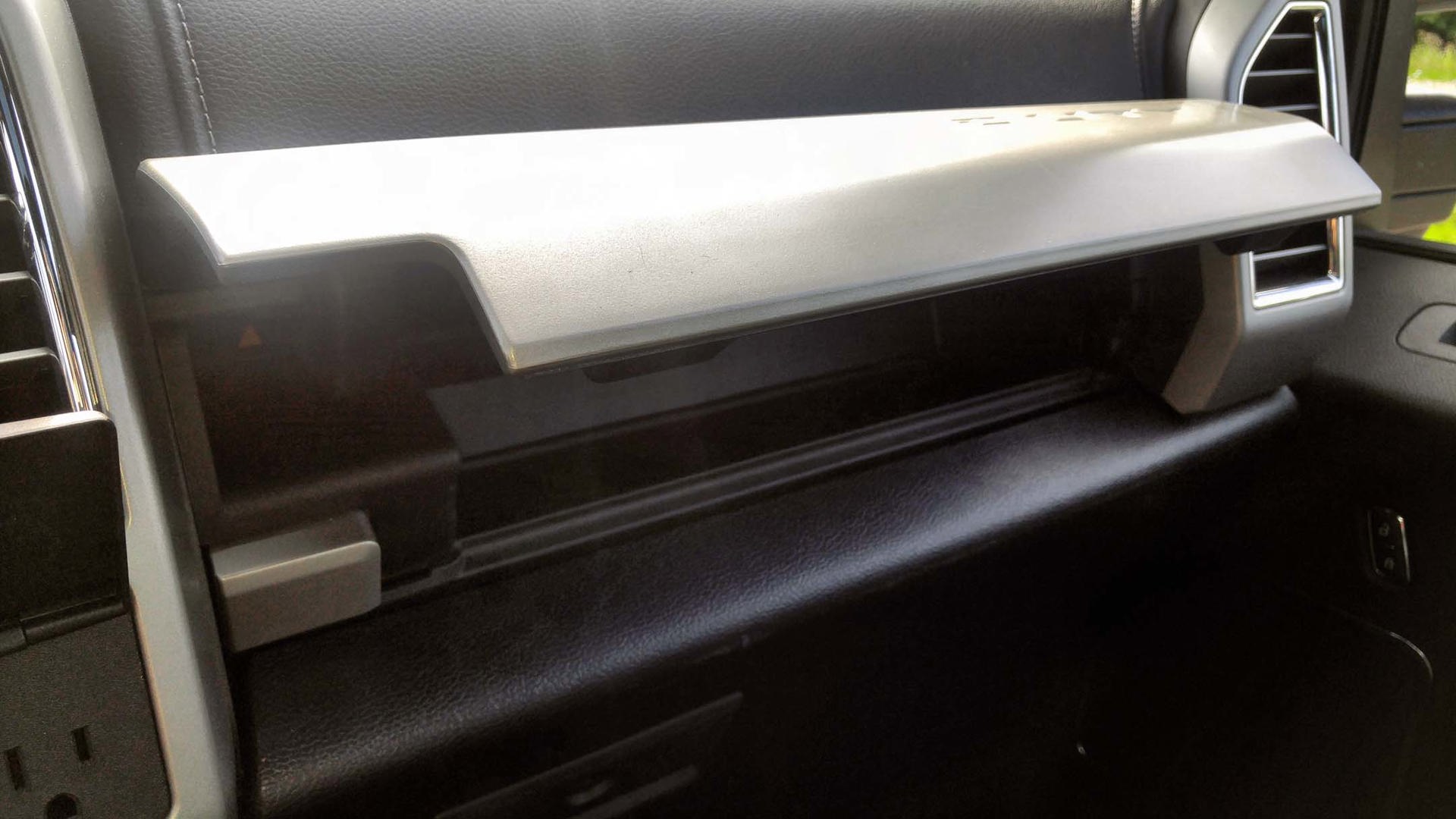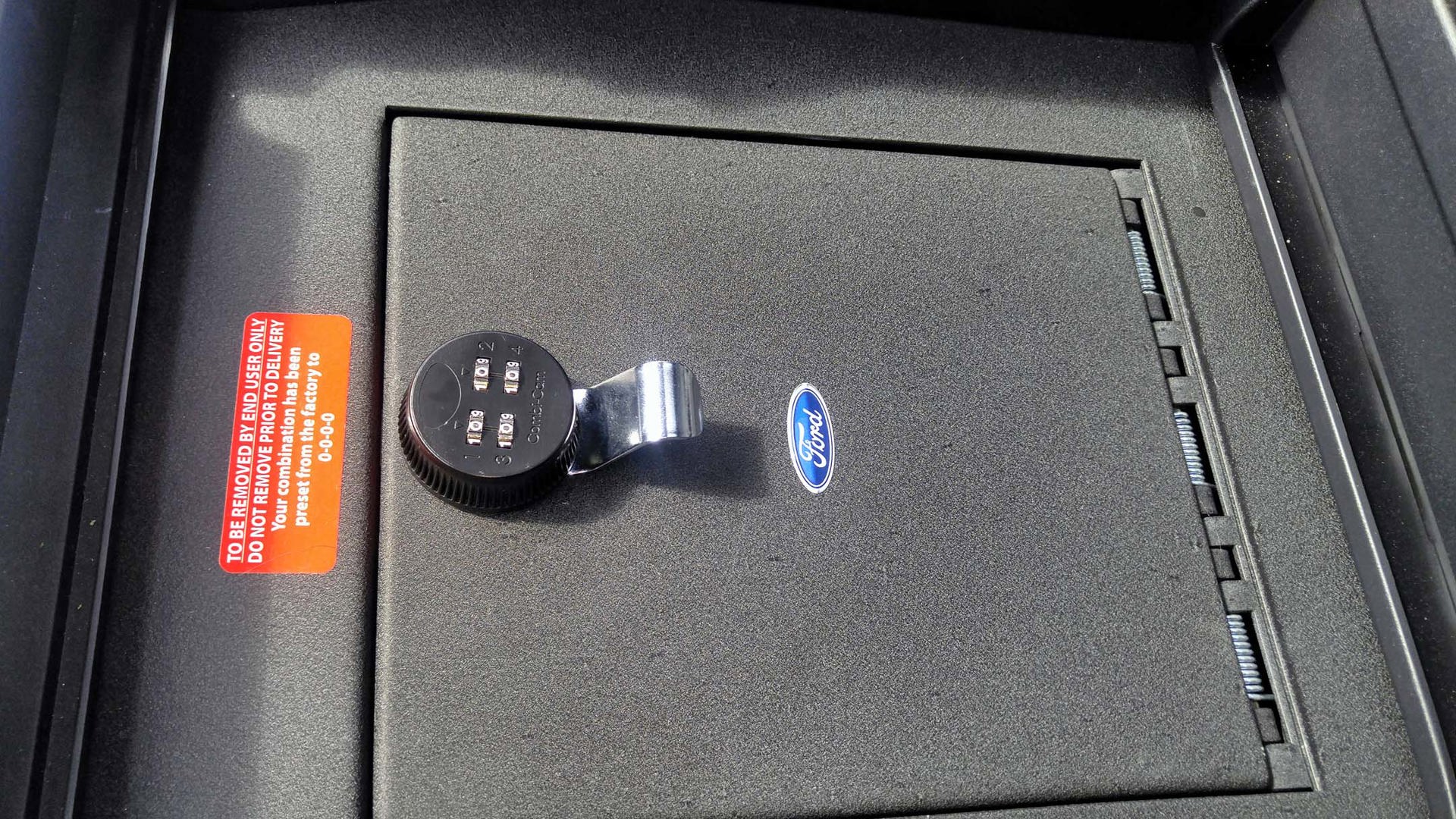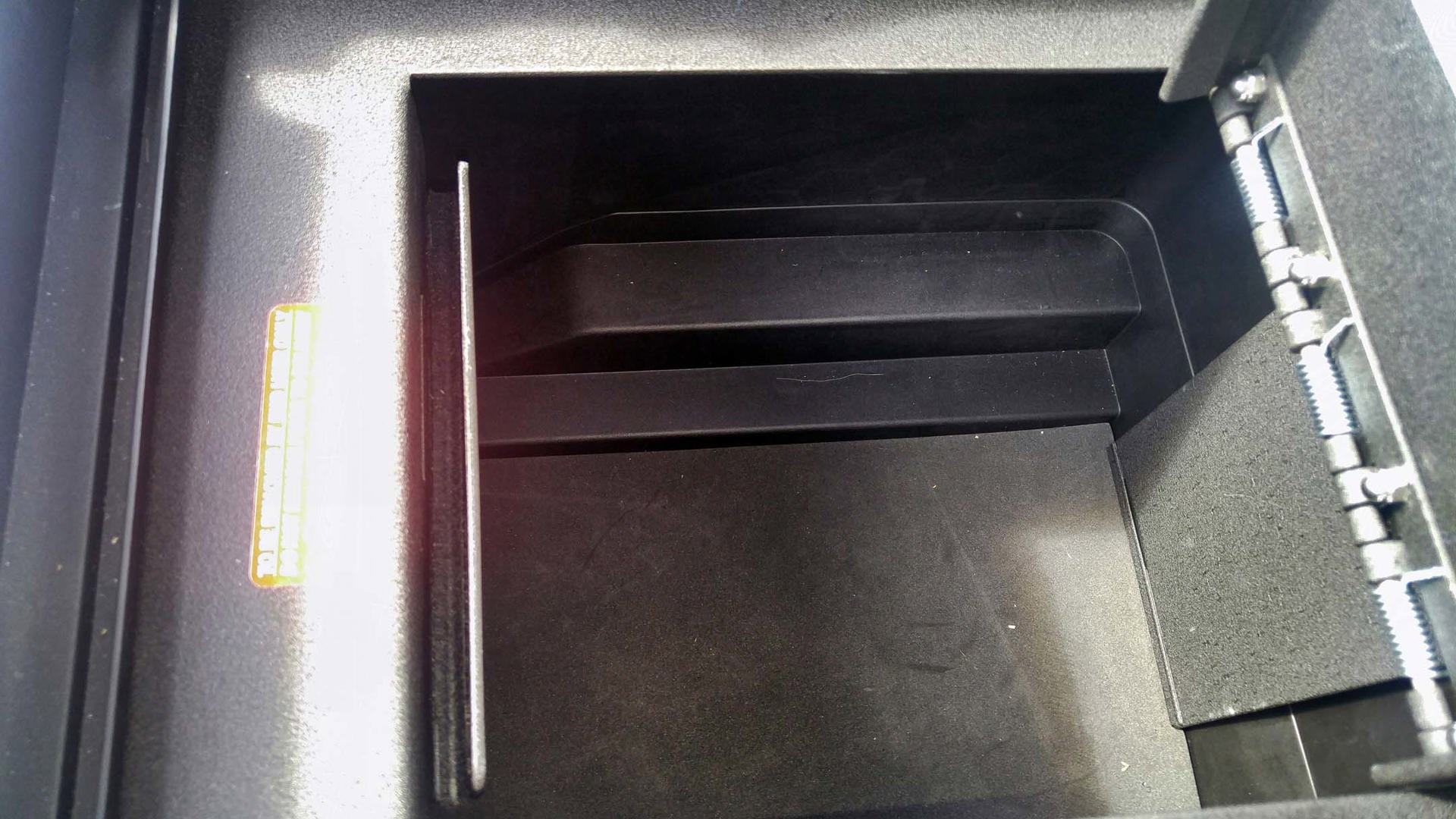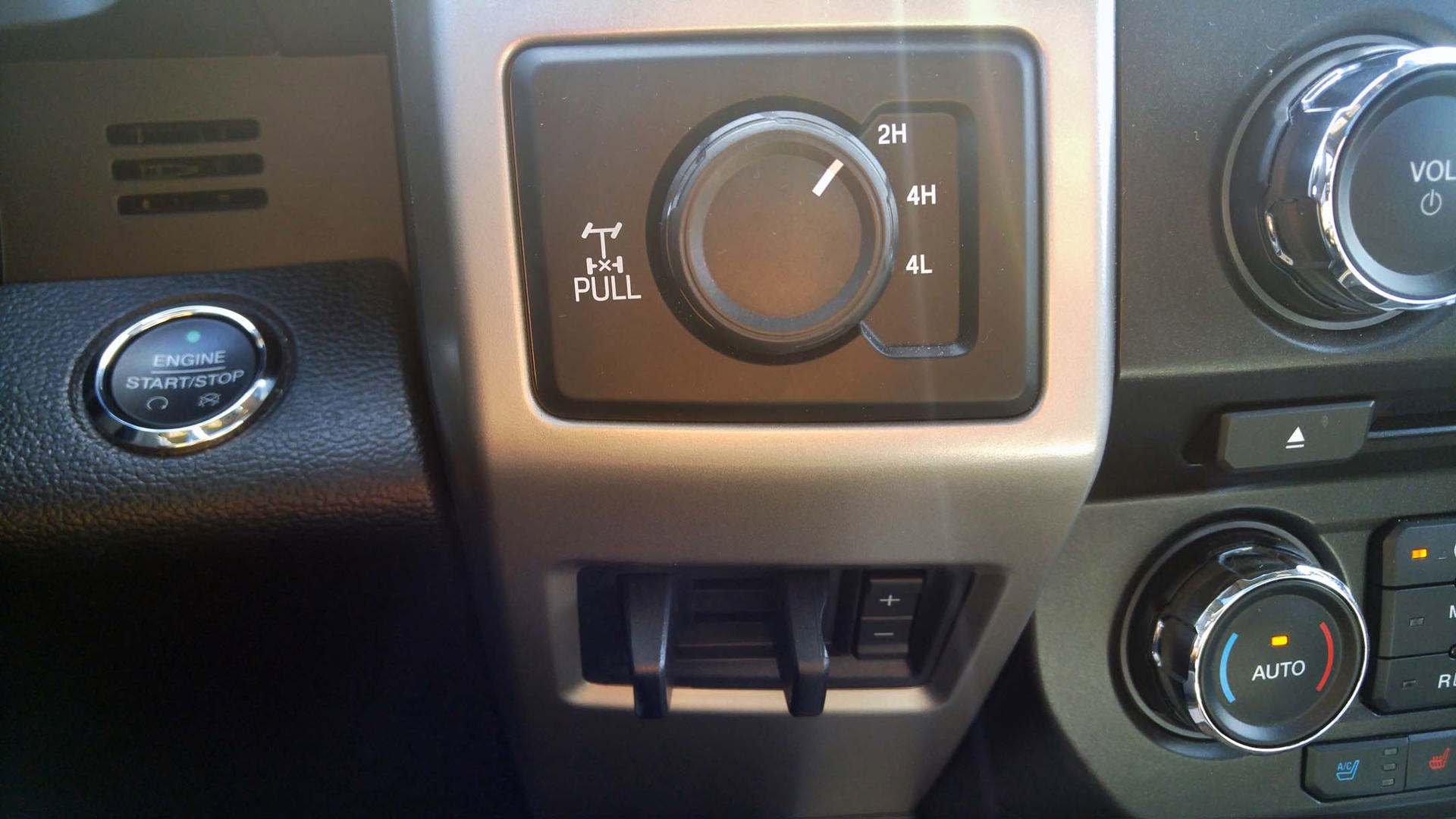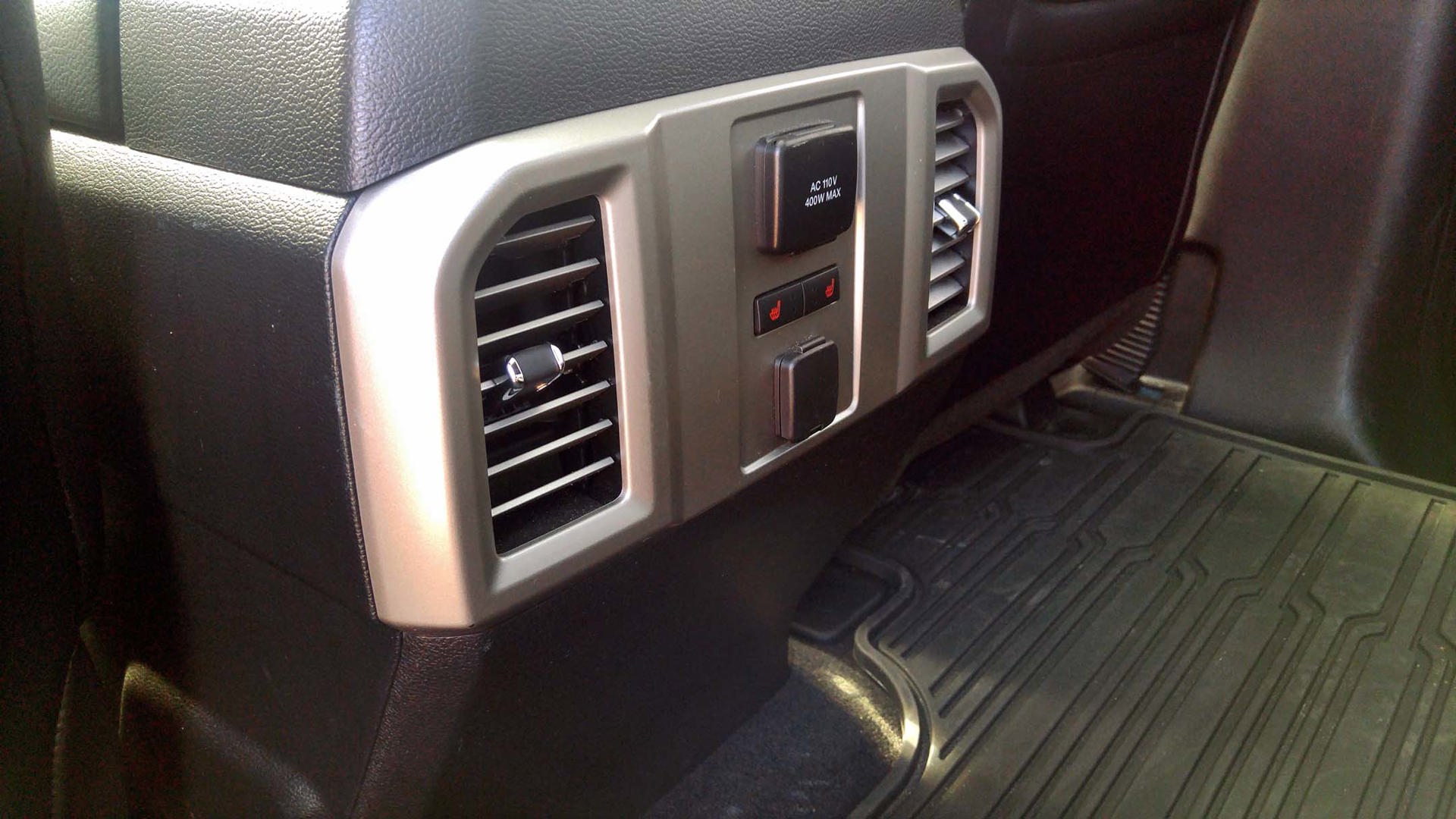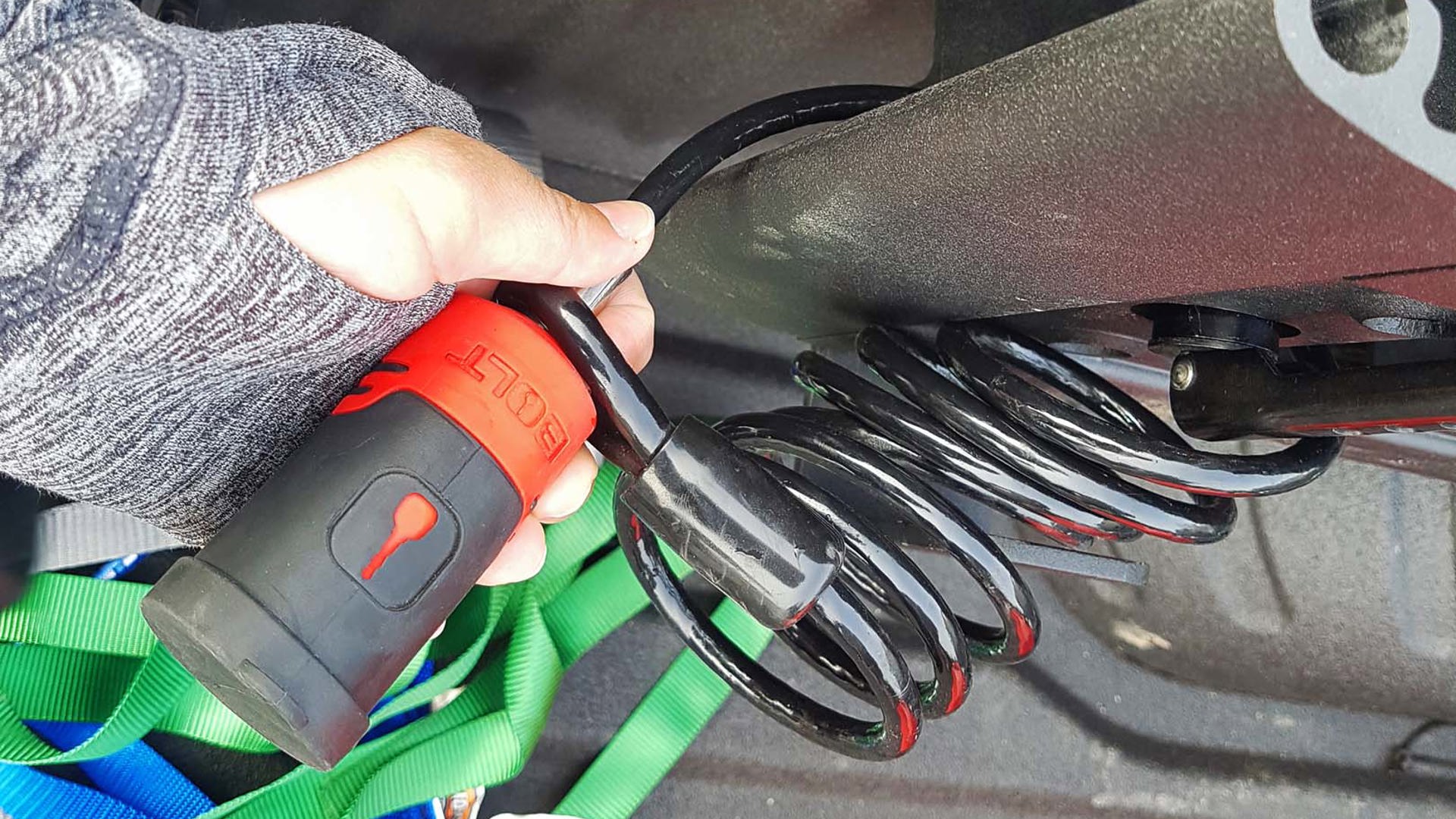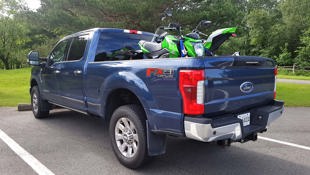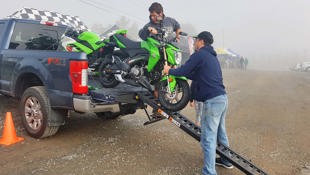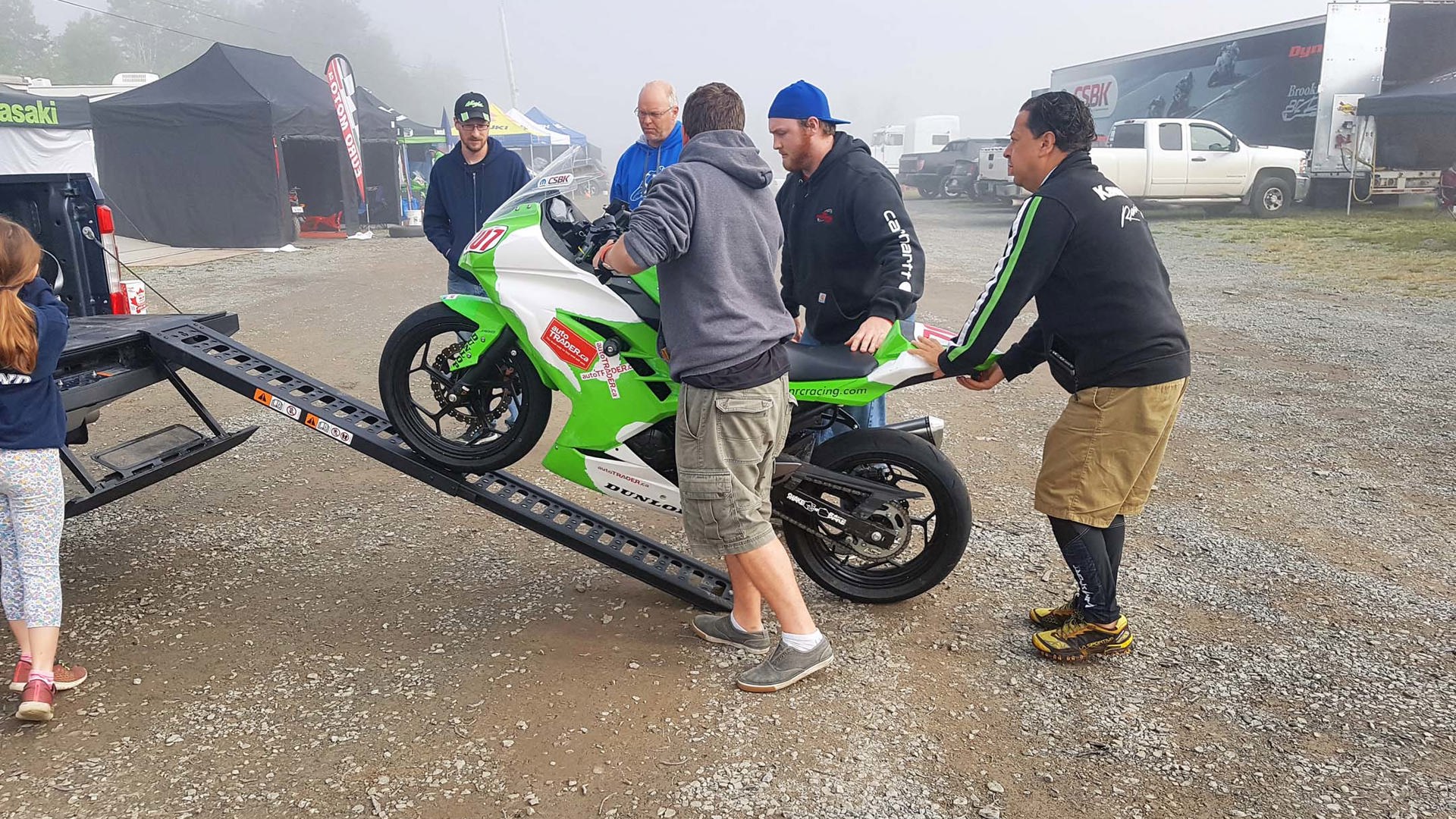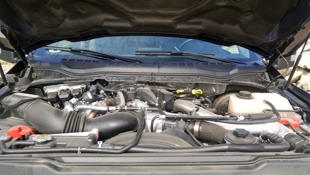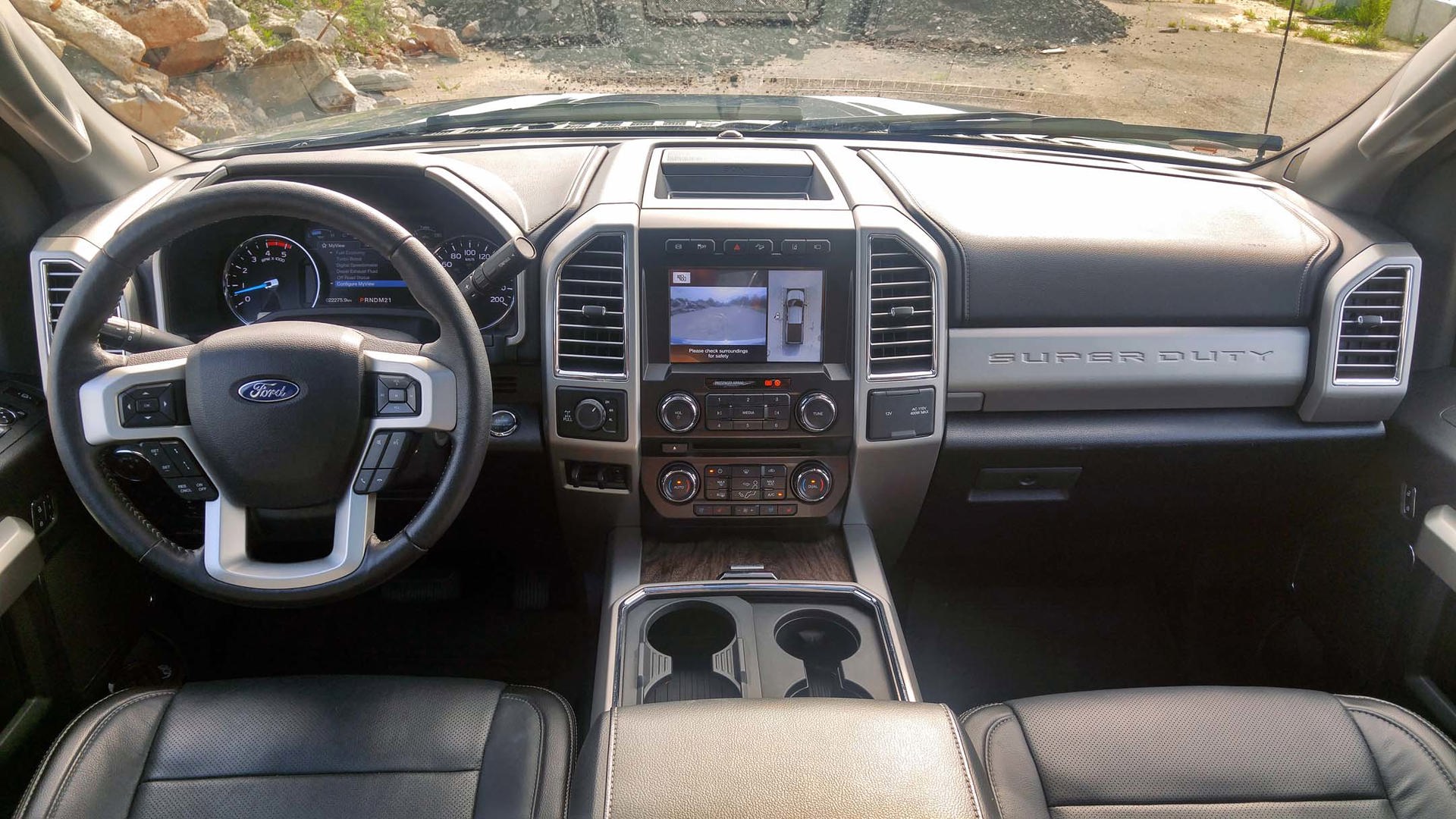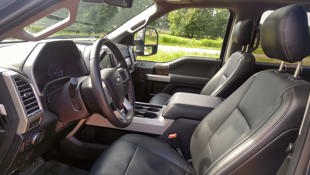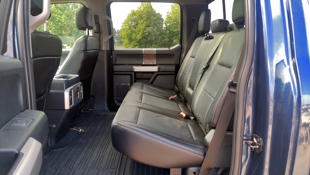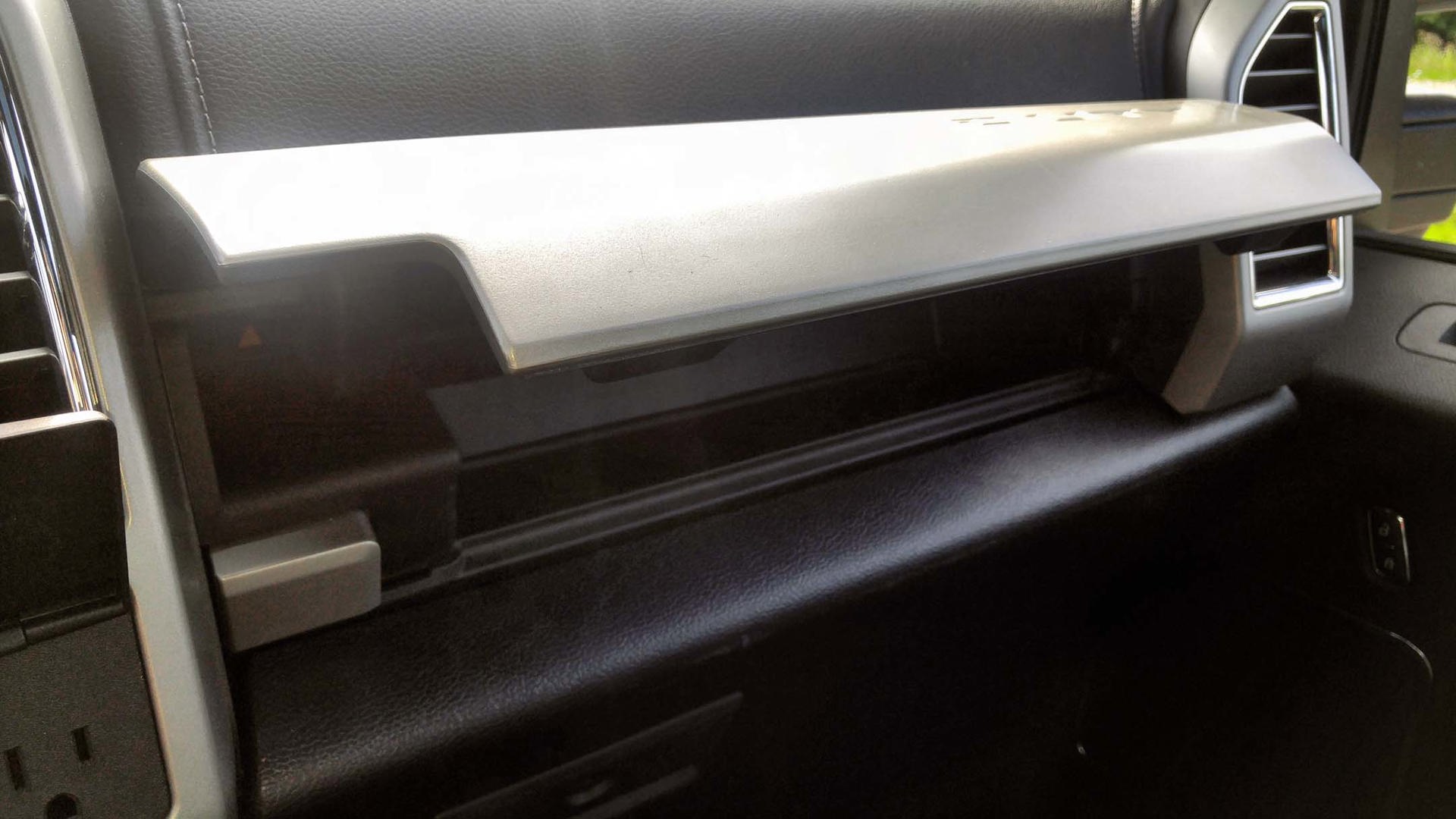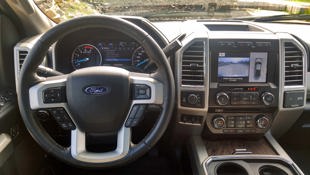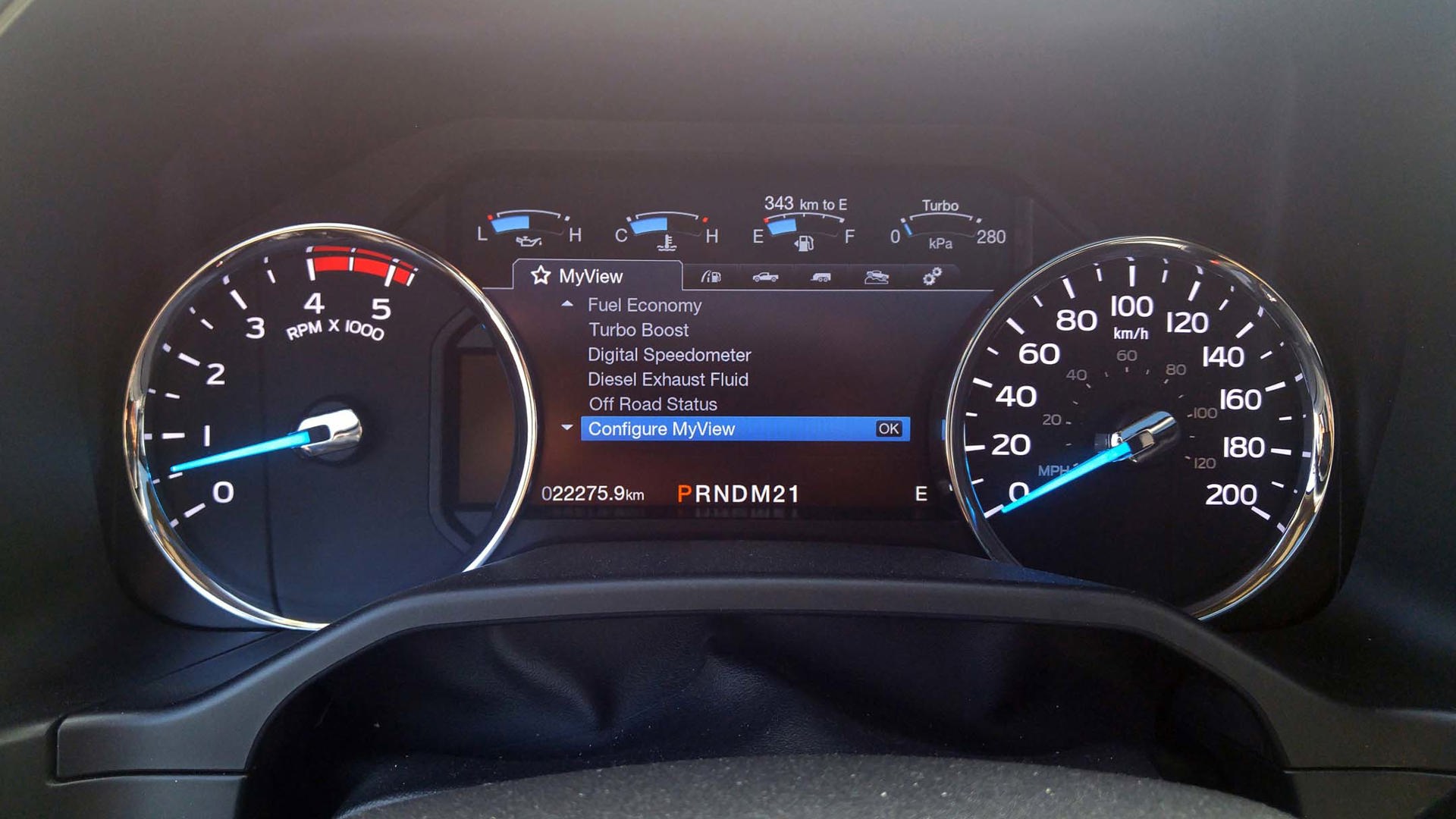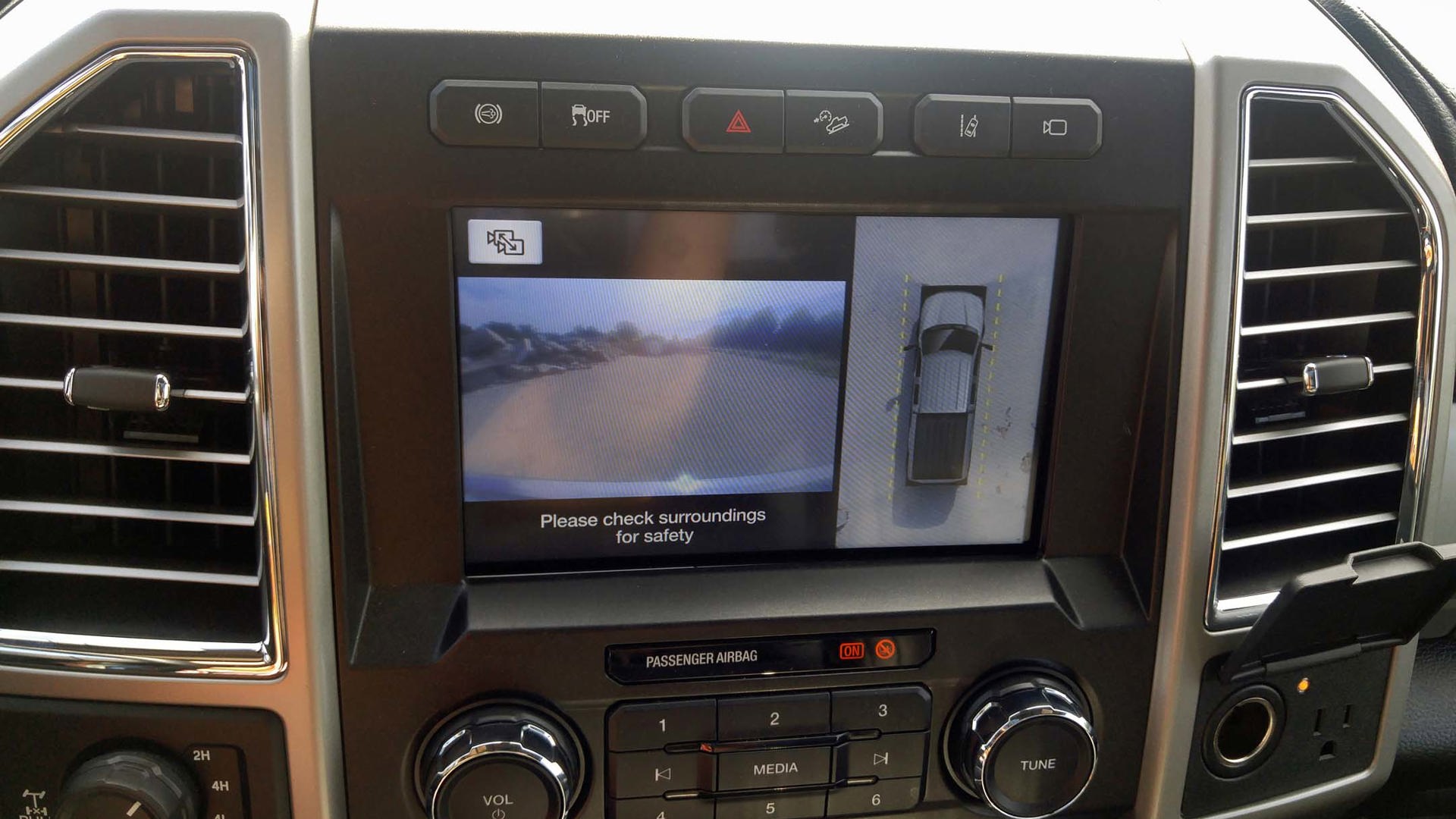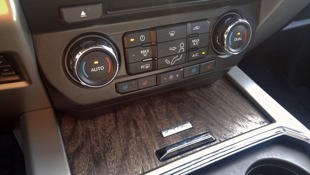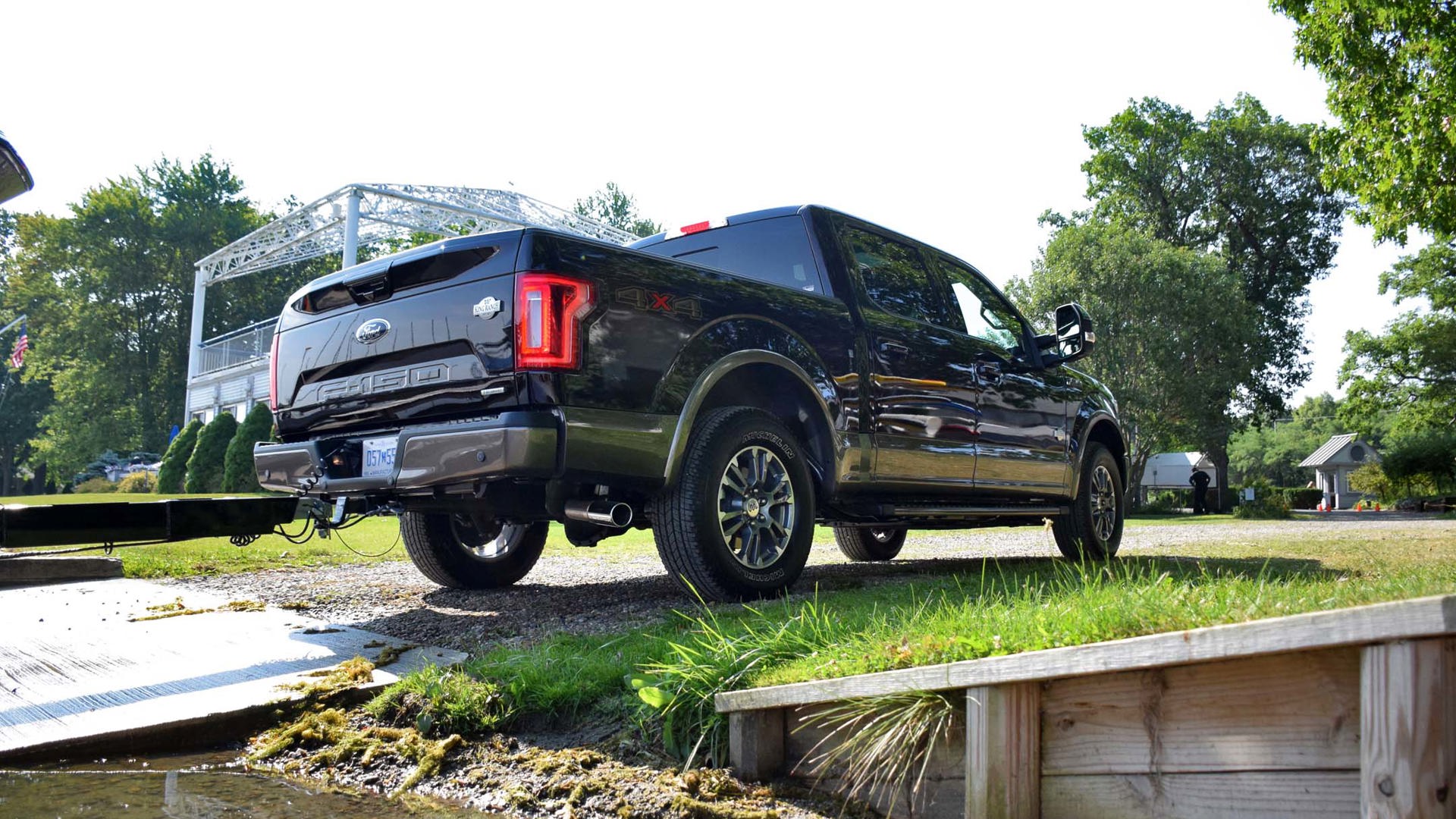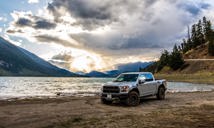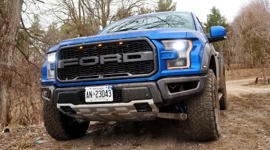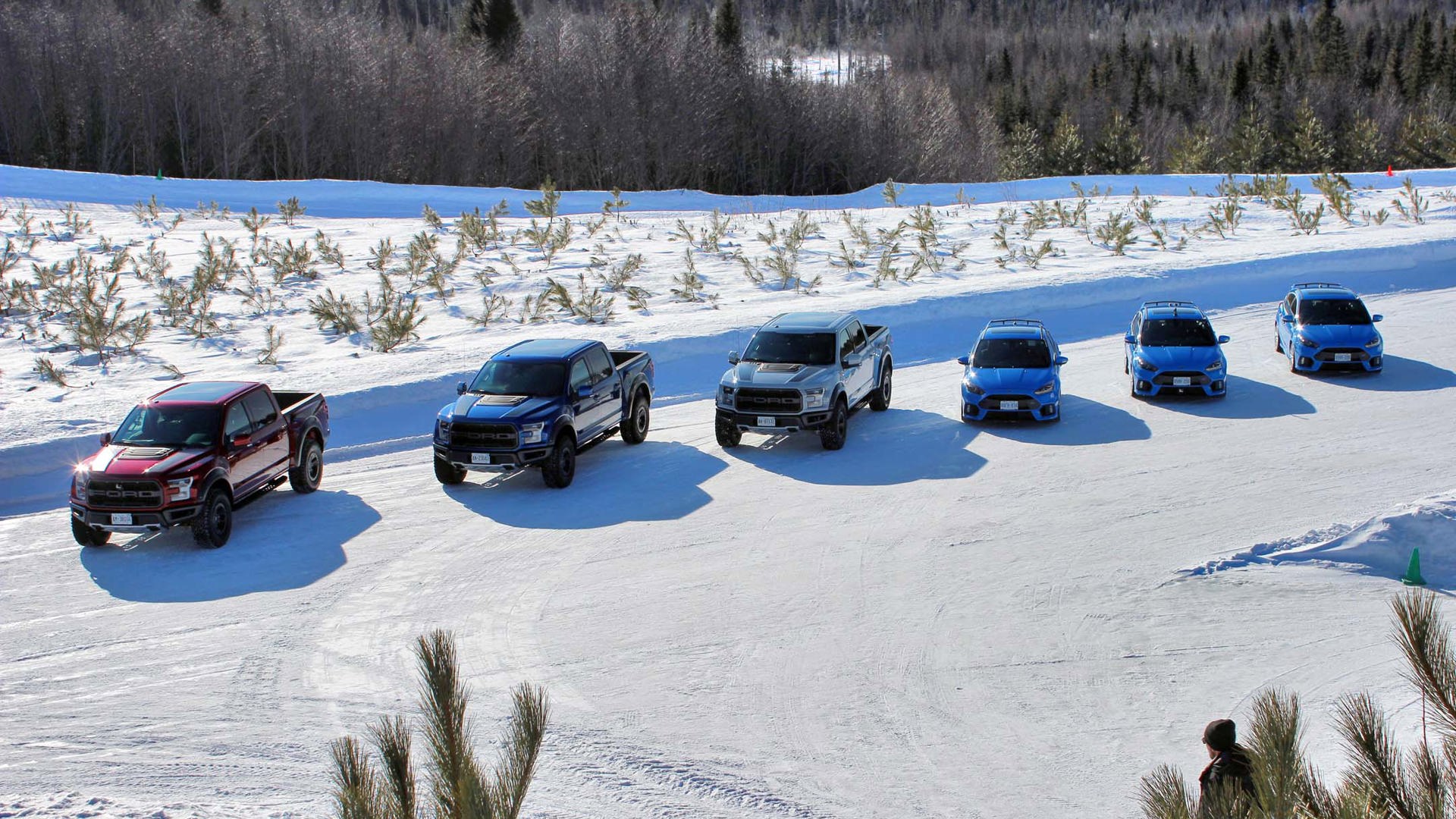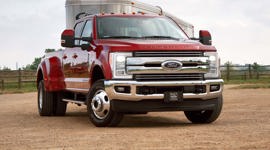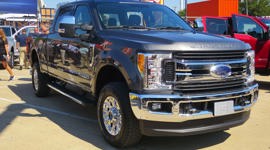 AutoTrader SCORE
AutoTrader SCORE
-
STYLING8/10
-
Safety8/10
-
PRACTICALITY7/10
-
USER-FRIENDLINESS8/10
-
FEATURES8/10
-
POWER9/10
-
COMFORT8/10
-
DRIVING FEEL8/10
-
FUEL ECONOMY8/10
-
VALUE8/10
To tow or not to tow? That was the question.
Long-haul road-tripping will never be quite the same for us again.
We had two motorbikes that we needed to get halfway across Canada. Being that it was our first time ever attempting such a thing, we spent weeks debating whether we would prefer pulling them in a trailer or strapping them down into the bed of a truck.
Fortunately, the decision was entirely up to us. Either way, the Ford F-250 that was assigned to the job was fully up for either task.
Wait a minute, you may be thinking: Couldn’t a light duty truck do the same thing?
Sure it could. Easily. Our total payload was only about 700 lb (or a little under 320 kg), and since a 6.5-foot bed was enough to hold the longest of the bikes, this would have been child’s play for just about any truck on the market no matter how we decided to go about it.
But there were several ways in which choosing the Super Duty, redesigned for the 2017 model year, made this not only much easier but a whole lot more enjoyable to boot.
Mike McGarrell, Ford Motor Company of Canada’s truck communications manager, told me when I picked this up that one of the aims of the design overhaul is to overcome the stigma that a Super Duty can only ever be a work truck, forever destined to be left behind on the lot while something else gets driven home.
Well, consider me a believer. This is a far, far cry from my Red Green-esque hunter-and-logger uncle’s creaking, rattling, stinking, noisy three-quarter-ton pick-up. The F-250 is as comfortable and feature-packed on the inside as any SUV I’ve tested and left us wanting for very little over such a vehicle, and it was so darned versatile to boot.
From loading and unloading the bikes to squeezing into tight parking spaces, creating a portable grandstand at the races or clicking off mile after mile on the highway in comfort, this truck was delighted to handle just about everything we threw at it.
Until we were snapped back to reality by the constraints of our ultra-urban lifestyle, my husband and I actually half-considered buying one. And since practicality (and the $94,064 as-tested price) dictates that we can’t, long-haul road-tripping will never be quite the same for us again.
Powertrain
The truck we tested on our drive from southern Ontario to Nova Scotia and back was equipped with the 6.7-litre V8 diesel engine, and the F-250 is currently the smallest truck in Ford’s line-up that has a diesel mill available (at least, until the F-150 diesel enters the line-up for the 2018 model year).
If you know your diesels, you don’t need me to extol the virtues. In terms of this one specifically, it’s absolutely stonking. We’re talking 440 hp at 2,800 rpm and, more importantly, a whopping 925 lb-ft of torque at 1,800 rpm. (Did I mention that this truck was massive overkill for our needs? It was.)
What this doesn’t have yet that the smaller Ford trucks are sporting is the more efficient 10-speed automatic transmission. Here, a six-speed is equipped, the same one fitted to F-350 and F-450 models (gas-powered F-250 models get the same number of gears but a different set of ratios).
It’s not really something that diesel Super Duty drivers will miss, though, since one of the hallmarks of these engines is already fuel efficiency. Trucks of this size are exempt from official testing by Natural Resources Canada, but our observed figures may raise an eyebrow or two: with this roughly 7,300 lb (or just about 3,300 kg) beast, plus the 1,000 lb we added to it, and covering a total of a few ticks over 5,000 km, we averaged 13.8 L/100 km. We were as low as 13.2 on the long highway run east; three days touring Nova Scotia’s interior pulled our average up significantly.
In terms of day-to-day practicality, there were similar patterns in how the engine behaved. At highway speed, the cabin was so quiet that we honestly forgot what we were driving at times. The same couldn’t be said for city driving, though: in the 50 to 80 km/h range, engine noise permeates the cabin much more readily and that diesel rumble is unmistakeable. The whole rig is such a pleasure to drive, though, that this was easy to overlook for the most part – the one poorly executed attempt to sneak out of a campground at 7:30 AM being the primary exception. (Sorry, neighbours.)
Body Construction
Don’t panic.
Yes, the Super Duty line-up has joined the F-150 in having body panels made of aluminum. But the aluminum here is thicker and more durable than in Ford’s light-duty trucks – and McGarrell reports that repair times for aluminum have turned out to be better than for steel on the F-150 since its change a couple of years ago.
Another benefit is that Ford was able to reinvest some of the weight savings that aluminum bought them into reinforcing the frame. Now sporting 95 percent high-strength steel and up to 10 cross-members, the F-250’s frame is 24 times stiffer and the truck’s overall centre of gravity has fallen far closer to the road than that of its predecessor.
This pays off in handling in spades. The F-250 is beautifully balanced and easy to control, even with an empty bed on a corrugated, unpaved road, where ricochet bouncing is noticeably reduced compared to similar trucks.
And in spite of all of this, the weight has still been kept down significantly: this model, for example, is in the neighbourhood of 400 lb lighter than its predecessor, no doubt contributing to the fuel economy numbers outlined above.
Towing
As I said off the top, we had the option to tow on this trip but didn’t exercise it. I can’t report a whole lot on real-world performance as a result, but I can tell you what Ford has set these up to be capable of.
Towing capacity numbers are up across the board on the new models. The tables that outline the maximums with the various engines, box lengths, and cab setups are extensive; with this specific model’s configuration (crew cab, diesel engine, 4x4, 6-3/4' box with 160" wheelbase), it can pull 15,000 lb (6,804 kg) with the tow package equipped. The maximum is 21,000 lb, which goes up to 27,500 for fifth-wheel and 32,500 lb for a gooseneck setup.
You may have heard a lot about the towing-assist features available on the F-150 that will more or less take over the driving duties and manoeuvre a trailer for you. Those aren’t available here; McGarrell says Ford’s research has shown that Super Duty drivers generally have a great deal more towing experience and don’t really want the intervention. (The fact that the Super Duty’s hydraulic steering is far less compliant with the system than the F-150’s electric steering is also a factor.)
However, many other helpful features are available such as on-board information storage for up to 10 different trailers that can track distance traveled and tire pressures for each, additional cameras and graphic directional guidance systems, and a tailgate light that shines directly onto the trailer hitch to help with late-night hook-ups.
Hauling
This is the route we decided to take for our job, and the reason we chose it was because Super Duty trucks have some factory-installed features that made doing so a whole lot easier.
For us, the job of getting the motorbikes in and out of the bed was a breeze with a set of factory ramps ($650). You can buy cheap ones easily, of course, but these ones offer peace of mind in a couple of ways: they slide seamlessly onto a rail on the tailgate so that they can’t slip during load in our out, and they lock to the side of the bed with a system that’s contained fully within the truck’s own key fob, so you don’t have to worry about getting to a job site/racetrack/cottage having left your key at home.
Depending on what you need to do, there are plenty more options to be equipped: tool boxes, LED bed lighting, interior upfitter power switches, an off-roading package and skid plates, and a tailgate step are among the highlights.
This model was also equipped with the telescoping two-stage side mirrors, a feature generally prized in towing, but it made our lives a great deal easier in hauling as well: our rearward visibility through the bed was pretty well nil, and these mirrors allowed us to see what was happening at the back of the truck across all lanes of a highway at a glance. The only thing left on my wish list was a slightly bigger blind spot warning indicator. While the mirrors are good enough that I found this feature wasn’t even strictly necessary, I enjoyed the added security of referring to it but found that the light was so small that it sometimes required a second glance to the side to register whether it was on or off.
Connectivity
Our tester was equipped with Sync 3, which is not only a good system on its own but, given that it’s compatible with both Apple CarPlay and Android Auto, should be considered nigh on essential in a truck that’s primarily going to be used for work. (Plugging your phone in also eliminates the need to pay for navigation as a separate feature.)
If you choose to operate Sync 3 without a smartphone app, you’ll find it quick to respond to inputs and equipped with some key features like 911 assist, which calls emergency services instantly for you if the truck detects an impact. What it doesn’t have is on-board Wi-Fi, though that’s arguably a much less important feature in a vehicle that’s not going to be hauling around teenagers for most of its life.
Safety
The new 4x2 F-250 earned a five-star overall safety rating from the National Highway Traffic Safety Administration in the United States, while the 4x4 Crew Cab F-250 tested here scored at four stars (the difference coming entirely in the rollover safety rating).
Additional optional safety features include blind-spot information with cross-traffic alert, lane-keeping alert, adaptive cruise control, and collision warning with brake support.
The Verdict
It was while driving into downtown Halifax to enjoy an afternoon on the waterfront that I was confronted with the sad truth of why a Super Duty would be impractical for my own lifestyle: with so much of the city’s parking being in garages and the F-250 towering to a height of over 2 metres, it took many trips around the block before I could find a place to put it. Since I live in a city centre myself, a vehicle of this size – however useful it may be in other aspects – would just never work for us, though we’re all too aware of how much we would enjoy it.
But if it’s time for a new work truck, or you live rurally and need something to get you through some rough roads and weather, and you’re wondering whether this new Super Duty might do double-duty as a paid and personal ride, the answer is an emphatic yes.
| Engine Displacement | 6.7L |
|---|---|
| Engine Cylinders | 8 |
| Peak Horsepower | 440 hp |
| Peak Torque | 925 lb-ft @ 1,800 rpm |
| Fuel Economy | 13.8 L/100 km observed |
| Cargo Space | 1,661 L |
| Model Tested | 2017 Ford F-250 Lariat Crew Cab 6-3/4' 4x4 Diesel 160" SRW |
| Base Price | $64,249 |
| A/C Tax | $100 |
| Destination Fee | $1,700 |
| Price as Tested | $94,064 |
|
Optional Equipment
$28,015 – 6.7L V8 diesel engine $9,950; 20" all-terrain tires $150; aluminum 20" wheels $1,490; all-weather floor mats $170; chrome package $1,350; FX4 off-road package $450; power running boards $950; centre console safe $450; adaptive cruise control and collision warning $1,500; fifth wheel hitch prep package $380; quad beam LED headlamps $1,200; roof clearance lights $100; blind spot information system $650; rear wheel well liners $225; front mud flaps $100; rear mud flaps $100; trailer camera and tire pressure management system $565; upfitter switches $150; upfitter interface module $400; spray-in bed liner $550; ultimate trailer tow camera $1,000; leather seats and console $460; Lariat ultimate package (navigation, twin-panel moonroof, adaptive steering, lane-keep assist, remote start, tailgate step) $5,675
|
|
